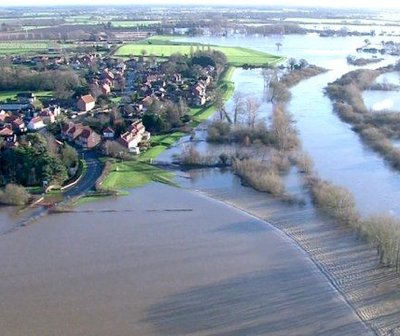After 30 years of teaching, half of
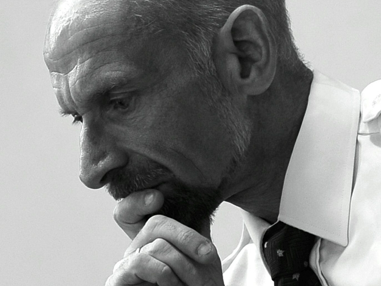
that time as a Housemaster and half of that time as a Principal in China, I’m offering perspectives upon the world.
An essay is an attempt at something, in this case, writing. The content is mine (where it is not, I have made that clear) and I only insist (not ask) that you declare the source and share any rewards if you use my material yourself. Any opinions are mine; I am (usually) open to attempts to change those opinions. The situations described are near to my perceptions of what happened. If you can sell this material, you are welcome to 10%.
I am expecting the readership to come largely from past pupils and colleagues. I would like you to write with corrections, opinions and anecdotes worth sharing. I am not keen to offer infinite blog roll at the end of each entry. I update the writing about once a year, so error-spotting, though welcome if you tell me, will be found eventually. There are many email tabs, including on this page. In more than ten years of the site, no-one has written directly and fewer than five via Facebook. Shucks.
DJS 20141111
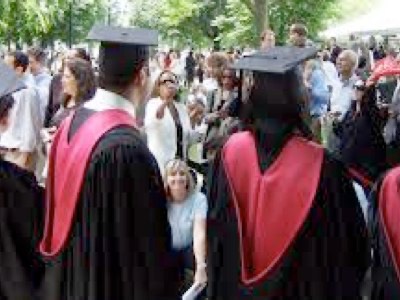
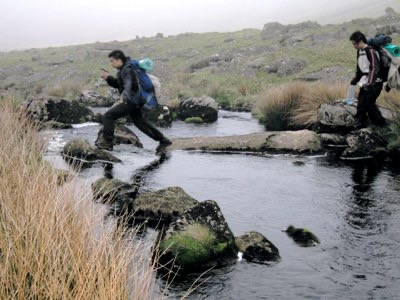
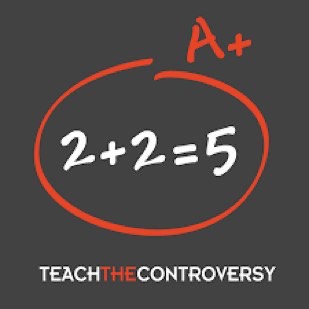
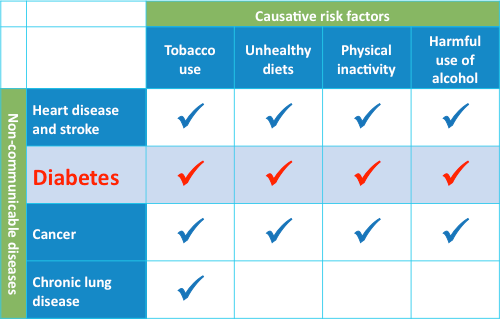





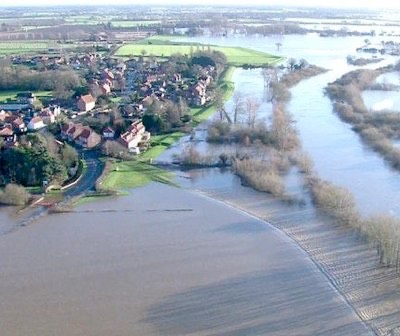


mostly, the fourth degree
One might think this is a very straightforward topic; degrees can be 1sts, 2nds or 3rds, where the bulk are the middle class, divided into 2:1 and 2:2. While largely correct, that is not the whole story. I explore this.
The student room supplied this brief description:
- ◦First-Class Honours (First or 1st) (70% and above) (OPEN UNIVERSITY 85%+)
- ◦Upper Second-Class Honours (2:1, 2.i) (60-70%) (OPEN UNIVERSITY 70-85%)
- ◦Lower Second-Class Honours (2:2, 2.ii) (50-60%) (OPEN UNIVERSITY 55-70%)
- ◦Third-Class Honours (Third or 3rd) (40-50%) (OPEN UNIVERSITY 40-55%)
- ◦Ordinary degree (pass) (OPEN UNIVERSITY AWARDED AT 300 CATS POINTS)
- ◦Fail (no degree is awarded)
- ◦Unclassified (some degrees aren't classified eg medicine or masters degree)
Wikipedia tells us that classification began at Cambridge separating the middle half from the upper and lower quartiles, which is norm referencing, isn’t it?
Things are a bit different at Oxbridge1, where the degree is awarded on examination results. You may think this a fine, almost irrelevant distinction. At Cambridge there are exams at the end of every year, [prelims, tripos parts one and two], while at Oxford there is a year off [Moderations at the end of the first year and Schools (Finals) at the end] so the second year could be truly enjoyed, exam free—such a rarity in over-tested modern Britain.
Why would you care? Well I remember being lectured (you wouldn’t use the verb taught) by the excellent CA Coulson; 1928 Trinity Cambridge, 1931 graduated in maths, 1932 graduated in natural science (by taking Tripos part two in Physics), PhD in 1936.2 Cambridge 1928-38. Coulson demonstrates that from the Oxbridge point of view it is not a matter of time served, but exams passed. Actually, he may well have sat schools / finals earlier and I was told (1972) he’d also taken finals in Chemistry. The rules in the 70s were that a degree would be awarded after a number of terms of attendance (who ever said there was any work done?), preventing no-one from sitting more exams and collecting more degrees, just not allowing the award itself until sufficient time has passed. You may think this a small point.
Things are a little different in Scotland too, where most universities have a foundation year, award an ordinary degree at the end of two more years and an honours degree at the end of one more, a four year course. Sticking out for a Masters would add a fifth year.
A fourth
The prompt to write this piece at all came from JCM in California, who asked me to “parse Ruskin’s 4th class degree”. What follows is based upon my reply.
Fourths were, as I understood it, given to people who hadn't quite done enough to be given a degree, but had done enough to be not denied one. I think they ran from 1831 to 1973. A typical example would be to have completed one question in Finals correctly, thus indicating that they were able to 'do' the subject, but did not convince the examiners that they had do more than have a sporadic familiarity with it. To test the validity of such an offering in Finals (also called Schools) a fourth was only awarded after an interview, known as a viva, or viva voce (live speech, my translation). One of the famous strategies was to set a target of having a 4th and a Blue, thus demonstrating that one could achieve practically anything by doing just enough. Such people were, apparently prized as employees, presumably mostly as salesmen. I tried and failed at this, having a third and being Blues reserve. I think they stopped about the time I finished, 1974, but I found this difficult to evidence. There was no suggestion that a 4th was given to those who were there only to win Blues (one can only win a Blue in competition with the opposition (Cambridge); what one might call a ringer. I have no doubt that places were and have been and are given to those who enhance the university side, but the degree work is still required. that said, the systems for regulation are sufficiently well hidden, in an old boys' club sort of way, that it would be easy to think they could be circumvented. I suspect that the British system is a little more correct that that, political exceptions aside.
It would not be right to declare that 1, 2.1, 2.2, 3 is equivalent to what was 1,2,3,4. Not at all. You might study the concept of going to university and doing self-directed work and then being called to account for what one had studied to test whether one would be awarded a degree, the original (as I understand it) route to a degree, as in Newton's day.
What would happen now would to be granted an Ordinary degree, not Honours. I had a friend who sat Finals and received an ordinary degree; he was invited to stay an extra year, to sit Finals again and receive honours; which he did. He has just retired as a very senior figure at Cisco (who make hard drives).
Aegrotat degrees are awarded to those who are prevented by illness from sitting finals. This is then a dgree awarded but unclassified.
Masters
You might recall that I've told you (a lot of people who question how I got an MA on no work, idle bugger that I am) that Oxbridge degrees 'mature' to Masters. There are different ‘levels’ of education defined by the national Qualifications Framework and the Qualifications and Credits Framework. See gov.uk.
Low (D-G) GCSEs are level 1;
Good GCSEs level 2;
A level, IB, BTECs, NVQ(3) all level 3;
Certificate of Higher Education, HNCs, NVQ(4) all level 4;
HNC, HND, BTEC professional diplomas, foundation degrees, diplomas of higher Education, level 5
BTEC Advanced Professional Diplomas, Bachelors degrees with / without honours, PGCE level 6
diploma in translation, more BTEC awards, NVQ(5), masters degrees, other postgraduate certificates, all level 7
Doctoral degrees level 8
There is a table on wikipedia in an article about the European Qualifications framework or try to see the real thing3 that explains the general definitions, so you can see how an academic body would apply for recognition of an existing course or equally how they’d propose to raise the standard of a course to reach a targeted level. Well worth reading.
This is because ( recently discovered) the EU rules for what constitutes a Masters (level 7 on the new scale) requires a significant part of the degree to be based upon independent work (not research, study). Which Oxbridge satisfies, clearly (in the sense that this has been ratified, not that it is self-evident, though I'd confirm it). Since the support systems in both Ox and Cam are deliberately scanty, I can confirm that doing a degree there forces an independence of study that you would not find at other British universities except on specific masters courses. My understanding of Socratic method suggests to me that some of the Ivy league universities go a similar route.
So in effect the MA (Oxon) and MA (Cantab) are honorary degrees. So, you ask,what happens if you actually want to work for one? Many pass it straight by and go for their doctorate (PhD most places, D Phil at Oxford). However, there is a worked Master’s course, called the Master of Studies, MSt, which is available at Oxon and at Cantab (and, I learned, Dublin, Newcastle and Australian National). I had wondered. Lonely, in a cloud...
I remember father used to annoyed that Firsts were awarded too easily, arguing repeatedly that a First represented a dramatically small percentage of the population (and I’d expect him to argue for a mark two standards deviations above the mean to be a general guide). I found some comment on the dumbing down of degrees to match those of A-levels, trending up steadily from 2007-12. As ever, there are loads of figures largely telling you that the author can’t do maths well and looking at a short period. trying to answer this, I discover (pdf link) the number of degrees (irrespective of the class) 1950 17,300 and higher degrees 2,400 compered with 2010, 331,000 and 182,600 respectively. Forget % increase; that’s 19x and 76x. Proportionally, four times more people going on to a second degree. But to keep that in context the proportion in education at 17 went from 7% to 76%. See below5. You might be interested to look at grade inflation, which provided what I was looking for elsewhere (why did I bother?)
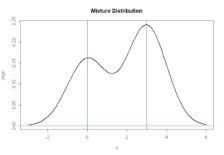
UK: Percentages of good Honours awards
(1st and upper 2nd) by Institution
1983–4 1984–5 2006 2008 2012
Cambridge 57 49 84 85 87
Warwick 34 42 79 76 81
Exeter 41 45.3 75 80 83
Robert Gordon 9 12 53 54 55
This doesn’t tell us how many firsts there were, but first and 2.1 degrees. taking data from the same site, using data from the HESA, I made this:
Year 1st % 2.1% 2.2% rem%
2014 18.8 47.0 22.8 11.4
2010 14.4 48.3 29.8 7.5
2000 8.7 45.3 36.3 9.8
1996 6.9 40.8 35.4 17.0

Now way back in the 19th century when grading began, the original suggestion was to grade the passing quartiles, so the top quarter was labelled first, the middle had second, the bottom quarter third—and not declaring what fraction may have failed. When I was in school, the whole idea of first was exception and you will appreciate from your Maths that this might well imply two standard deviations from the mean to be the measure. So even 5% of awards being classed as First would be, in most years, too much. I remember a discussion with my tutor at Oxford, in which we looked at the distribution of results, which displayed a bell curve with a hiccup around the third / fourth / fail mark, as happens when two distributions exist. I have a poor image inserted until such time as I can create my own. Ignore the x scale; the majority distribution is the blue one and the red should be enormously smaller. The green aggregate line, once we have adjusted the two populations to produce the effect, will have a dip (as in the top distribution) and a local maximum on the left. The place at which the gradient is most negative is the pass mark and the bump to the left until the pass mark level is reached again represents those who might usefully be given a viva (and hence a fourth, an ordinary degree or a fail). I will try to produce what I need to show on my own.6
I found this on The Tablet, from which I quote selectively.
"Fourths were first granted in 1831, when Sidney Herbert, of Oriel, obtained one, while his future colleague, Gladstone, of Christ Church, was carrying off a double-first ; but a fourth was for a long time an honour of doubtful signification, for the examiners placed in that class passmen who had gone through their examinations with signal credit, and this they did without designating these passmen as 'Honorary Fourths.' When the late Lord Justice Thesiger was raised to the Bench at so early an age that his appointment was much discussed, the fact of his having won a Fourth only came out; but his former tutor explained that this was an Honorary Fourth, which proved that if Thesiger had not been prevented by ill-health from trying for honours he would probably have secured a first.
There is no objection to calling this class, in specified instances, an Honorary Fourth, if it is at the same time understood that, in those instances, it means something more. If the Times writer had looked back to the paper of October 21, 1880, he would have found this :— Ultimately, however, Mr. Thesiger did not go in for honours in the final classical school, and he accordingly went in for an ordinary pass, and was placed as a compliment in the Fourth class. His papers in the schools [final exams, Cris] were so well done that, upon going in for the viva voce part of his examination, the examiner, after asking him a couple of questions advised him to allow the whole of his pass papers to be annulled and to go in for Honours. This was a most distinguished compliment, and Mr. Gordon, his tutor, assured us in a letter which we published in 1877, that he only remembered two other instances—that of the late Mr. Stephen Denison, who took the examiner's advice, and was placed in the First class ; the other, Mr. German Lavie, who was unable to act upon the examiner's advice, and received his Honorary Fourth. Mr. Thesiger followed the latter example.
I wrote to the Times explaining that, Mr. Gordon, writing in perfect good faith, was not aware of what had occurred before he took his own degree; and giving all the details which you obliged me by printing in the Tablet of November 6, 1880.
It will be seen that the person whom the Times writer, with easy familiarity, describes as Sidney Herbert of Oriel, shared with three others who, probably for varying reasons, decided to take a pass only, and not go into the Honour Schools—the Hon. G. F. Harris, of Christ Church, E. Otto Trevelyan of C.C.C., and the present writer— the "distinguished compliment" of being invited by the examiners to act, as the examiners of the later day invited Mr. Denison, Mr. Lavie, and Mr. Thesiger to act. I venture to quote a few lines of my letter in the Tablet of November 6, 1880 :— "After our examinations, viva voce and on paper, were over, the examiners sent with our testamurs a message that they wished to see us. They saw us one by one, and I presume used much the same language to each of us."
I recollect with pleasure the handsome friendly manner in which I was told that what I had done had so fully satisfied them, that they intended to put me in the Fourth class ; and, further, asked me to come in for higher honours. My dear friend, E. Otto Trevelyan alone of the four, accepted the offer and received a higher class.
July 21, 1883. DANIEL PARSONS, M.A., Oriel College.
DJS 20160502
Top pic from google images. I had a hard time finding Oxford MA graduates, being the ones with a red lining to their hoods. Far more like the one below with BA hoods in the foreground. Since the maturation period is short, I imagine very few buy these gowns. I (own and) used my MA hood throughout teaching at Shiplake, it being required dress in church and at ‘official’ functions. I’m sure some parents acted differently when we dressed in sub fusc for Parents’ Evenings.

The gowns shown (from the Oxford supplier, Shepherd and Woodward; these found on the university site) are: Top row: MTh(eology) graduate, BM(edicine) graduate, BA graduate, MFA (Fine Art) graduate. Bottom row: MSt (Studies) graduate, MA graduate, DPhil graduate (PhD elsewhere).
I have not listed websites visited on this occasion, unlike my recent habit, not just because I forgot, but also since so many proved useless in looking for this content. Where I found a use, it is linked.

1 Oxbridge = Oxford and Cambridge.
2 Amazing man. Able chemist, physicist, mathematician. Lecturer in Physical Chemistry UCL 1945-7; Oxford, Chair of theoretical Physics, Kings London 1947-52; a founder and first director of the Maths Institute in Oxford (1952 to 1974); Chair of Theoretical Chemistry, 1972. A conscientious objector during WWII, he taught Maths Physics and Chemistry at Dundee, a heavy load. I note also that he was Stanley Rushbrooke’s PHD supervisor; I knew Prof Rushbrooke as my father’s immediate boss at Newcastle and met him often when small (the ‘50s and ‘60s). The link refers to father but gets his initial wrong.
3 I failed to find the real thing, but I didn’t try very hard.
4 In Scotland it is usual to have Honours after the 4th year, and an ordinary degree at three years. I suspect that the Scottish Higher School certificate is judged to be between AS and A-level rather like Chinese Gao Kao; something to do with the number of subjects; I think the total learning is similar but the system judges that the depth of knowledge is the issue. That contrasts with the steady dumbing-down issue, surely: at what point have we learned knowledge in a way that somehow loses the ability to analyse what we learn?
5 . c1950
- •In 1951 there were 27,700 public primary schools or departments in the UK. These were attended by 4.8 million pupils, there was an average of 171 pupils in each school and an average of 30 pupils per teacher.
- • In 1951 there were 5,900 public secondary schools in the UK. These were attended by 2.0 million pupils; there was an average of 342 pupils in each school and an average of 20.6 pupils per teacher.
- • 7.7% of central government revenue was spent on education in 1949-50
- • In 1949-50 there were 2.4 million students who attended grant-aided establishments of further education (again mainly evening and part-time courses) in England and Wales.
- • In 1953-54 10.7% of the relevant age group passed five or more GCE O levels at schools in England and Wales. 5.5% of the relevant age group passed one or more GCE A level and public sector schools and further education establishments.
- • In 1950 17,300 students were awarded first degrees and 2,400 were awarded higher degrees at UK universities.
- • In 1950 30% of 15 year olds, 14% of 16 year olds and 7% of 17 year olds were in full-time education in England and Wales.
- •
c2010
- • In 2010-11 there were 21,281 public sector mainstream primary schools. These were attended by 4.9 million pupils, there was an average of 231 pupils in each school and an average of 20.4 pupils per teacher.
- •In 2010-11 there were 4,072 public sector mainstream secondary schools. These were attended by 3.9 million pupils; there was an average of 943 pupils in each school and an average of 15.3 pupils per teacher.
- •The average salary of full-time qualified teachers in public sector schools in England was £34,700 in November 2011.
- • Expenditure on education made up 13.3% of total public sector expenditure in 2010-11.
- • In 2010/11 there were 4.9 million learners who started a publicly funded further education course in the UK.
- • In 2010/11 79.6% of pupils in their last year of compulsory education in the UK achieved 5 or more GCSE grades A*-C or equivalent. In 2003/04 39.2% of the relevant age group passed two or more A levels or equivalent.
- • In 2010/11 331,000 full-time students were awarded first degrees at UK universities and 182,600 (all modes) were awarded higher degrees.
- • At the end of 2010 88% of 16 year olds and 76% of 17 year olds in England were in full-time education.
6 Watch what then happens to my graphic!!
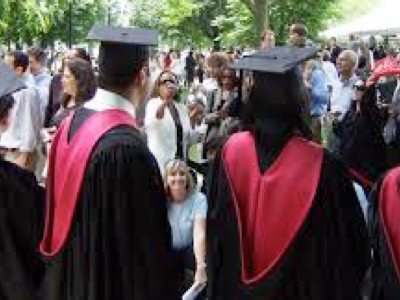
How to go faster in the Hills
Following on from essay 191, I wonder if it is worth writing some collected thoughts on hill-walking. My objective here is to provide some suggestions that may optimise a day for those who want to gain the most from a day. So this is specifically personal and you may well disagree from the outset at my implied objectives.
I spent the best part of 15 years training (being one of several such) teams to perform at TenTors. This is an officially non-competitive event in which teams of six attempt to visit ten Dartmoor peaks, at distances of 35, 45 or 55 miles in a time period of 27-34 hours1. I somehow always ended up shadowing, shepherding and sometimes advising the 55-mile team, for whom 55 miles point to point on a map actually ends up being 100km on the ground. Given that teams are required (expected) to stop for eight hours, we were looking at 18-24 available hours, perhaps (on 2015 rules) two to four more by stealing from the expected down time. [55 teams would, I expect, aim to clock into say tor 7 before 22:00 and walk on towards tor 8 before stopping, clocking in at Tor 8 close to 06:00 on Sunday. Of course, everyone is advised to be camped between 20:00 and 06:00 but the teams somehow adopt aggressively competitive attitudes.
So, if training to achieve such distances there are several issues to resolve:
- • practising sufficiently to be able to do the distance, which, in the first instance means learning to cope with walking for an awful lot of hours in a day
- • being sufficiently aware of the moor to navigate reliably between the possible combinations of tors. In particular it is a significant help to have learned which routes you really dislike.
- • learning to walk at a speed that means you are able to finish with a modicum of time in hand for contingencies.
The 35 mile teams have few problems. Distance on the ground is about 60km, which means that 3kph will result in 20 hours walking. No problem then, once 20 hours is itself achievable.
The 45 mile teams begin to have problems, thought the strong teams do not. Ground to cover is around 80km so 3kph won’t work and 20 hours suggests 4kph.
The 55 mile teams do have difficulty. 100km at 5kph is 20 hours and at 4kph is 25 hours—of walking. So that slower speed might allow a finish and in turn the training target is always going to be to do 5kph for as long as possible.
This presents several subsidiary challenges:
- • Can you walk that fast on Dartmoor?
- • Can you reduce your stopping time to sufficiently small proportions that the walking time is large enough to complete the route?
- • Can you do anything to improve your speed across the ground?
Yes, you can walk at 5kph on Dartmoor, if you choose the ground carefully. There are many places where 3kph is appreciably quick. There are few places where 7kph is achievable: I did 7kph last week with no effort for the last hour of seven, but it was on an empty road; I have managed 8kph on stony tracks in the lake District but that is by consciously pushing the pace. I often managed 7kph in the late afternoon on the grassy slopes on the west side of Dartmoor but we should recognise I carry light loads and I’m already pretty hill-fit, so I’m on the fast side of any statistical distribution. But it can be done.
So routes need to be well understood, or the map-reading is so very good it causes no stoppage time. Teams have to be sufficiently well organised that stoppage time is under 5 minutes per hour.
If you walk at 5kph for 50 minutes per hour; your mean speed is reduced to 4.2kph. To keep it up at 5kph you need to actually walk at 6kph. To achieve 5kph on a stoppage time of 5 per hour, your target speed is 5.5 kph. It might be better to organise your kit so that drinking occurs while still walking, to consider not stopping for lunch but walking on, and planning on a significant but time-efficient stop at, say, six hours intervals. 30 minutes out every six hours is still 5 minutes per hour. Alternatively, you might calculate an hour of stoppage on Saturday and none on Sunday, leaving you (as a 55 team) something like 14 hours walking on Saturday (that’s perhaps teh maximum allowable eight tors achieved) and Sunday will be okay. 70km on Saturday in 14 hours (07:00-21:00 plus an hour stoppage) is 5kph.
So you’d really like to be able to show you can go faster than 5kph on the moor, so as to have a little leeway.
Essay 191 illustrated the need to reduce stoppage time and that aiming off on faster tracks can pay off handsomely. Thus the 55 team learns that 5kph becomes the minimum acceptable speed. 45 teams aim at 5kph, 35 teams aspire to it.
Experience says that the typical PMC senior team really can average 5kph, which is an actual walking speed of 5.5kph, maintained across a long long day. it means that on better surfaces speeds are nearer 6.5kph. That’s just over 4 miles an hour and, if you’re saying to yourself “That’s doable”, remember (i) this is with a heavy pack (you’re going to camp the night and you’re quite likely to have to prove you’re properly equipped at some point in the walk) and (ii) you’re looking to do this all day, not just for three of four hours.
________________________________________
So, the lessons learned then apply to romping around other hills in Britain. I don’t need to stop to look at the view, though I can choose to do that. I discover that I seize up pretty quickly if I stop, so my rucsac supplies drink on demand with no need to stop, my map is tucked in the gap between back of my sac and myself (and tied on so it doesn’t blow away), I have a compass in every jacket, one in the sac and that means there is always one within two seconds. My hill-food comes in little pots suitable for eating on the hoof, so a typical day such as last week on Cheviot entails six hours of walking and under 5 minutes stoppage. I aim to have one minute off per hour and I walk for six to eight hours like this. I slow down after eight (it is simply lack of practice, lack of need to go further and, if I’m completely honest, by then I’ve had enough). Taking the total up to ten hours means I don’t much enjoy the last two—and I have to guard against making mistakes (tripping over, assuming route knowledge without checking, etc).
There are rules for calculating time walking, based on distance and climb required, Naismith being the most-quoted rule. back when I was a teenager, I learned i did 4 mph and 2500 ft an hour, that’s 6.25 kph and 800m/hr. 45 years later I’m a little bit slower across the ground and quite a lot slower up and downhill, but I stop an awful lot less often. I don’t bother to calculate the numbers any more; it takes as long as it takes and I’ll modify my day or route to accommodate how I feel, how the weather is, how the ground is today. I’m recording hours elapsed and distance covered, but only in the sense that I’m looking at the map and saying “That’s about right for a day worth the drive to get there and back”. Like last week, 25 km in 5.5 hours on soggy Cheviot; or the week before 32km in 7 hours over Blencathra, Skiddaw and at least three other things in between. The lakes are appreciably less soggy than Cheviot, but hillier, so much the same in elapsed apparent speed.
DJS 20160419
I thought, as I wrote this, that I’ve written much the same on an earlier page. I can’t find it.
1 As I remember these, no-one was allowed past Tor 8 before 0600 on the Sunday, having started 0700 Saturday.
’35’ teams are required to stop at or before 20:00 Saturday at a designated site (near their evening tor, typically Tor 6-8, not allowed to proceed to their next tor).
45s were given slightly more leeway where to camp and 55s were allowed to walk on and camp properly wild, often aiming to be just short of their ‘next’ tor, so as to clock in there early on the Sunday. Tors ‘closed’at 20:00. I see from the 2015 rules that the wild camping is now extended to 45s and 55s and that tors close at 22:00 (20:00 for 35s). I take that as meaning that the kids are (i) trusted to camp wild and (ii) perhaps prepared to admit to walking more hours.
See the rules, particularly rule 65.1-3.
Walkers must carry a minimum of equipment, amounting to quite a lot, even if modern, expensive and light. You may not finish after 1700 Sunday. The very fastest teams start arriving around 10:00 Sunday.
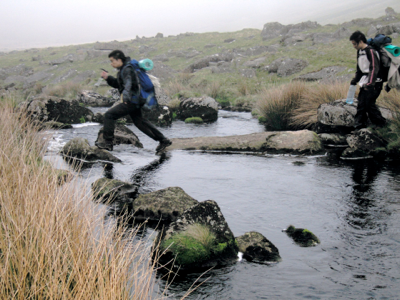
“I have no use for Maths”
When I was writing about stupidity I was close to including a refusal to use mathematics. Where most of the time I mean arithmetic. I really do not understand why it is that we so readily accept that, for example, it is acceptable for someone in the public eye to say “I could never do maths” followed so often by a statement which illustrates a failure to make logical statements.
It could be that the habit of testing mathematical statements for truth, “This really is equal to that” never percolated. It could be that a failure at an early age to be satisfied with ‘getting things right’ leads to be happy not getting things right, as an expression of the status quo.
For those people who don’t know whether they fall into either camp, I’ll give some examples of cases where I think using maths would be appropriate:
- 1. Shopping at the supermarket and keen to underspend, you see Scotch Eggs at 30p each, 75p for two and £1 for 3. You want some, maybe three or four. What do you do?
- 2. A group walking on Dartmoor have a planned route for say 30km and, after two hours it is nine o’clock and they have covered 5km. When do they expect to finish?
- 3. You’re driving in a 20mph zone. You are expected to be able to stop in a short distance; standard tables suggest 40ft or about 13 metres. Assuming those conditions apply and that there may be circumstance in which you’d be expected to stop, how fast would you be going at the notional non-impact point if instead you were doing 26mph? Put it another way, how far beyond the expected stopping point would you actually stop?
- 4. A similar group on Dartmoor are not enjoying walking on wet heather in springtime. One of the group observes that they all walk faster when on any sort of track, including a sheep track. If they changed from going directly to their intended target and instead took the next available acceptable sheep trail, how far off the desired direction could they go and still be going faster in the desired direction? Try for a guess in multiples of five degrees before you go work it out.
- 1. The single eggs are significantly cheaper. I am not the only one to notice this. Why then do people choose the other offerings? Mostly because they don’t want to think about the numbers, I suggest.
- 2. Continuing at the same rate, they would expect to finish this route in twelve hours, ten more from noticing the time, so 19:00. Which, for many groups, means that they will not finish this route. Which in turn means that they have a problem that should have been addressed before they started. It is likely that they have (i) someone inexperienced added to the group who has a problem so that this has not been factored into the plan. If completing the route is important then (i) this needs to be communicated and there are consequences such as a late finish or someone dropping out or (iii) the route need to be modified to accommodate what today’s group can achieve. In a sense, it needs to be clear what it is that constitutes a success for the day. From experience, such a group would make far better time if they ceased stopping to regroup and found a speed that their slowest member can walk all day. Boring but true. I still do about 5kph on rough ground, but my stopping is under a minute an hour. But then I can (and do) do arithmetic. Incidentally, this was a fairly common problem at PMC and generally a 19:00 finish was okay, where a 21:00 finish was dubious and was often dealt with by abandoning that route, though our action rather depended upon the weather and which training weekend it was.
- 3. You are supposed to already know your stopping distances. It was easy in the bad old imperial days of miles and feet; for speed S mph, the total stopping distance was made up of thinking distance S feet plus braking distance of S2/20. At 20mph that is 20+400/20=40 feet. At 26mph you need 26+676/20=60 feet (a tad less) and, at. At the 40 foot mark you’d have been braking for 14 feet, so the speed at that instant would be whatever needs 26 feet to stop in, S2/20=26 or √(26x20)=23mph. At impact you’d STILL be over the speed limit. So why do you NOT obey the limit in a 20 zone?
- 4. Exciting, an excuse to use geometry. Say speed on the Dartmoor-standard rough stuff is R and about 3kph. Say speed on a sheep track is S and about 4kph. Differences of 0.5 to 1.0 kph are normal, based on a lot of observation by me. Bigger differences are possible, but once it is learned that this approach works, the calculations are moot (because it is now a strategy). Draw a right-angle triangle with the longest side S and the middle length side R. The cosine of the angle between these is R/S. For 3 and 4 we get an amazing 40º. For 3,5 and 3 we get 31º. For 5 and 4.5 we get 26º. In other words, you can look quite a long way ‘off-direction’ for any surface that will be quicker to walk on and that such a choice will succeed in comparison to plugging away at a compass direction. You don’t do this if working/walking in bad visibility. Most of us do open-ground walking in relatively nice weather. This simple calculation—once seen, it is not as if you’re going to refine it—shows that there will be gain a long way off target. Obviously you will need to compensate with another such track in a while, but this applies also to very short-term choices (i.e. within several paces) as it does to long stretches. I have noticed recently that on wet ground the ‘path’ is actually slower than using the ‘rough’; I am aware that on Lakeland hills, some stony paths are slower than the adjacent grass (now the policy is seen to be bad for one’s personal erosion coefficient). I also notice these states are significantly changed by the current degree of slope. The situation is similar but different if running.
Those examples barely use GCSE maths. What they require is a willingness to look at the numbers and see that there is a useful question to ask. You agree, I hope, that the maths above is pretty easy. My point is that such a question is too often not posed. What used to drive me to distraction (rage, wanting to be elsewhere) is not just the failure to recognise the message in the numbers, but (far more often) that there is a refusal to act in line with the result. A sort of “Yes, but this doesn’t apply to me”, which could be translated as really not caring at all.
On Dartmoor, where such evidence often results in simply recognising that “Today is going to be a long day”, these are non-dangerous results. The group will eventually learn that they go at <this speed> and that this means in turn a ‘day’ is <that long>. Eventually they will address underlying problems, all which could be classed as preparation (from being fitter, to having better kit, to having a lot less kit, to sharing the weight around to balance abilities, to picking better routes, to waking up to the challenge as a whole.
On the road, I find the ignorance of risk astonishing. I agree that frequently one is left wondering why a piece of road has a particular limit. I picked the 20mph zone deliberately, since there it is common for other users of pavement and road to act on the assumption that 20mph means a 40foot stopping distance, that is, typically young pedestrians learn that this is a ‘safe’ place to act in ways that elsewhere would be grossly irresponsible. We call this ‘safe’. Yet every day you drive through such a district you are aware of the significant numbers of road users that exceed the designated limit by so much that they would still be over the speed limit at the point of impact. It may be relevant to quote the African saying in translation “If you want to go quickly, travel alone; if you want to go far, travel together”. For long distance walks, the trick is to reduce the stopping to a minimum.
More advanced forms of these same questions:
- 31.Assuming you are aware that many people exceed the posted speed limit, then for speed limit L, at what expected stopping distance do you not only fail to stop in time but are still exceeding the posted speed limit? Does that inform your driving style? Might you use that to inform others? [Excuse for use of algebra, but the problem is not can you do that, but can you set up the algebra to be done, the difficult bit that goes first].
- 32.Speed vs Safety essay 156, uses the term marginal speed. If you have 10% excess over the posted limit, what is your residual speed at the point when you ‘should’ have stopped?
- 33.(and 2) If out walking on open ground, are you aware of your changes of speed? Of direction? Are you aware of the many micro-decisions you make that constitute such walking? How do you modify those choices with regard to what you can see? This might be asking you to assess your own capacity for use of feedback. Does it matter ho much you lift your feet in taking a step? Does that answer vary with the ground? if it does, do you use that information in making short-term route choices?
Oh, you complain, that’s not maths. well of course it isn’t: Maths is the tool for doing other stuff, rather like language is for communication.
I am sure that the hard parts are:
• recognising what would lend itself to such a problem. Indeed, often, recognising that there is a problem at all.
- • acquiring the data (but I note that very often the data is in front of us already, begging the question to be asked)
- • setting up the maths to be done. I often said to classes that the world doesn’t actually need very many super mathematicians. what is doe s need is a lot of people who recognise that there is a problem to pose and that these people be able to communicate what that problem is so that a solution can be found. And communicated back to those who are expected to make non-mathematical decisions based upon something better than an unexplained reaction.
Why do we do maths? Mostly because we need it to explain so many things. I am noticing increasingly a connection between an inability to explain (many things) and a low ability to do maths. Where perhaps what I mean is an ability to think in mathematical terms, for there are many people with an acceptable qualification in maths who persist in the refusal to apply any such thinking. it is one thing to fail to spot some possible mathematical application. It is entirely something less to deny the evidence and to refuse the result.
DJS 20160419
Happy birthday, JP
I resisted the inclination to use medical risks, though I am not entirely sure why. A rich field: perhaps I am open to suggestions. What would be appropriate?
What is the point in Maths? “A point has no size, but simply marks position. See Essay 31
See several other pages on this site, not all in Lower School Extension work:
31: Let L be the Limit, your fast speed is F, your stopping distance is supposed to be S2/20+S and in practice it is F2/20+F, so the difference in distance, ΔD, is L2/20. Multiplying all through by 20, we have
F2 -L2 +20(F-L) = L2 Rearranging, F2+20F = 2L2+20L = 100∂. Solving for F, F=10[√(∂+1)-1]. Giving:
L 20 30 40 50 60 70 mph
100∂ 12 24 40 60 84 112
F 26 40 64 68 82 96 mph
T 0 48 57 66 75 mph
T is that speed that leaves you doing 30 mph at the expected stopping point:
Let 100ß be defined as 900 + L2-20L; then T=10[√ß+1)-1] and we can add a row reading, T≥30.
Look what that means at motorway speeds!
32: Let L be the Limit, your speed is S=1.1*L, your stopping distance is supposed to be S2/20+S and in practice it is L2/20+L, so the difference in distance, ΔD, is (S2-L2/20 +(S-L) = (S-L)(S+L+20)/20. So your residual speed, R, is when R2/20 = that difference, so R2= (S-L)(S+L+20) = (0.1 L)(2.1L+20)
= 0.21 L2 + 2 L
L 20 30 40 50 60 70 mph
S 22 33 44 55 66 77 mph
ΔD 6 12 21 31 44 58 ft
R 11 16 20 25 30 34

Down with Sugar
I have been banging on about national levels of obesity for more than a decade. House assemblies were received with a groan from all concerned. “Here we go again”, to which I would respond, “But you haven’t changed your actions”. Maybe that is a lot of the problem?
The WHO has published a report recently (I found several papers commenting on it).
The number of people with diabetes has nearly quadrupled since 1980. Prevalence is increasing worldwide, particularly in low- and middle-income countries. The causes are complex, but the rise is due in part to increases in the number of people who are overweight, including an increase in obesity, and in a widespread lack of physical activity.
Diabetes of all types can lead to complications in many parts of the body and increase the risk of dying prematurely. In 2012 diabetes was the direct cause of 1.5 million deaths globally. A large proportion of diabetes and its complications can be prevented by a healthy diet, regular physical activity, maintaining a normal body weight and avoiding tobacco use.
Picking from the report as a whole:
- •This is a world-wide and growing phenomenon. It is an epidemic, especially in developing countries.
- •World-wide, we have in 2014, more than one in three adults aged over 18 years were overweight and more than one in 10 were obese. the consequences of diabetes are expensive at a national level.
- •far too much of the list of complications and the national-level expense is avoidable.
10% of diabetics have type 1. It is the most common childhood diabetes (teachers would first assume that any diabetics in their school are type 1). The majority have Type 2 (or Type II). Here the pancreas is not producing enough, or the body is fighting against what is produced. Generally Type 1 surfaces before age 40 and type 2 after that. The age-switch is far lower in Africans (more like age 25) and you might research that dividing line for different ethnicities.
Type 1 diabetes 10% of diabetics have type 1, where the pancreas fails to produce insulin.
Type II diabetes is the other 90%. The pancreas produces too little insulin or the body resists what is produced. Causes include age (>40), genetics (it runs in the family), being overweight or obese [the strongest risk factors] ethnicity (irrespective of birth nation, notably south Asian, Chinese, African-Caribbean or black African origin). The WHO tells us that foetal & early childhood nutrition affect future risk.
The growth of these figures is definite and not evenly spread. In 1980 there were 108 million sufferers (2.4% of the population); in 2014 there were 422 million (5.9%). That’s a compound growth rate of 4%, or 2% when allowing for global population growth. As we learn more about the disease, we identify those parts of the population most at risk. From a westerner’s perspective, being overweight and unfit are the most likely ways into having the disease. What I find disturbing is that this is a one-way ticket, in that there is no reliable cure, merely management of the condition. So once you’re on the slope, you’re not going up again. I read that many are effectively in denial, so that treatment when it occurs is unnecessarily late, with disturbing consequences such as loss of limbs. Denial, in the sense that they don’t ‘present’ themselves for medical aid. One (just one) of the effects is peripheral vascular disease, constriction of the blood vessels, leading directly to ulcerations (feet especially), lack of blood flow and in consequence amputations. the level of amputations in Britain is awful, over 7000 per year and rising (so that is at more than the 2% mean). I found a Public Health England report giving figures from which I select a few gems from the press release:
- • 26% of those in high risk categories could be prevented from going on the develop the condition
- •“There are too many people on the cusp of developing Type 2 diabetes and we can change that.”
- •“The NHS spends 10% of its entire budget managing diabetes and unless we get better at preventing Type 2 diabetes this figure will rise to unsustainable levels.”
- •“We know how to lower the risk of developing Type 2 diabetes: lose weight, exercise and eat healthily, but it’s hard to do it alone”
if you think this applies to you, read the NICE report. I have copied here a flow chart from it that may help.
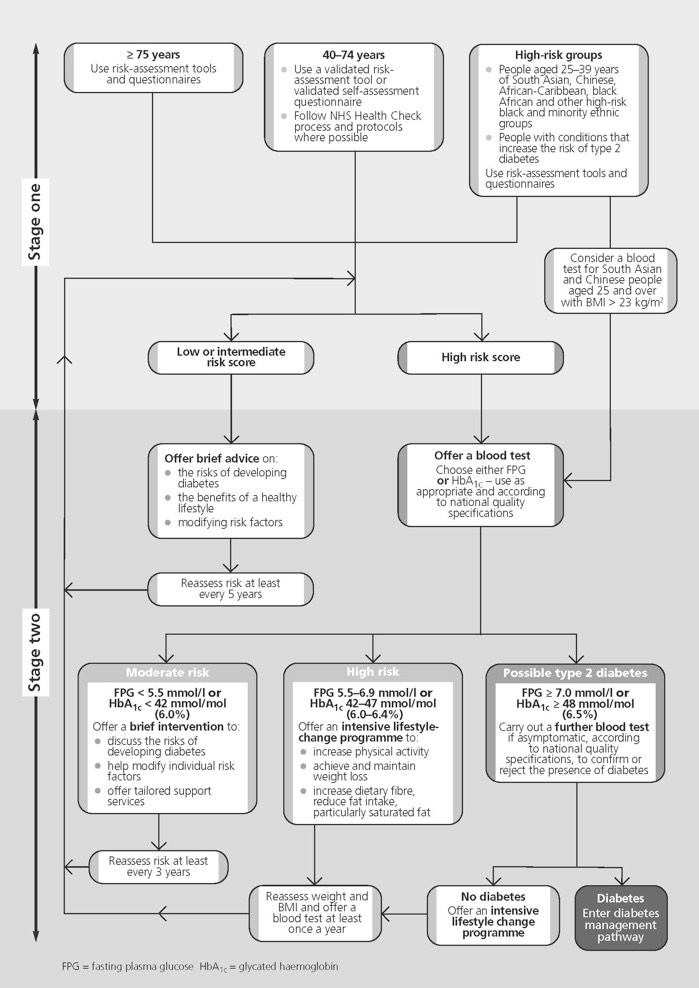
There are three main forms of diabetes: type 1, type 2 and gestational diabetes. The cause of type 1 diabetes is unknown and people living with it require daily insulin administration for survival. The vast majority of people living with diabetes globally have Type 2, which is largely the result of excess body weight and physical inactivity. Once seen only in adults, type 2 diabetes is now increasingly occurring in children and young people. Gestational diabetes is a temporary condition that occurs in pregnancy and carries long-term risk of type 2 diabetes. It is present when blood glucose values are above normal but still below those diagnostic of diabetes.
Let’s look at the two things we might sensibly study: the significant costs and the sense in which it is largely avoidable. Once you’ve got it, it is largely incurable and you at best minimise its effects. I found several ‘cures’, but precious little academic support for these, so I’m leaving them out.
Costs:
The new estimate further underlines the need to act on Type 2 diabetes, especially as it already results in 22,000 early deaths and costs the NHS £8.8 billion every year. (2012, source).
I have seen this figure as 10 billion and as 10% of the annual budget. When you include the indirect costs, I found a 2012 figure of 23.7 billion. It is not only very large and the sort of sum which, if we could save half of it, would make a noticeable difference to the nation, but the new political message (that it is avoidable) seems at last to be being noticed. You may be struck, as I am, at the age of the numbers I have found. So we can expect lots of encouragement to change our diets, to change lifestyle patterns into including more exercise (targeted at those that do none), into having measures of acceptability. 2014 report.
Most of all, from what I read, it is encouragement that matters. Criticism won’t do; what counts is persuasion and support into making change. One of the current political issues I expect to see movement on is sugar tax, as part of a general move to change national diet. But note that this fails as encouragement. the “couch to 5k” initiative I have reported on before takes its place and cries for the return of lost sports facilities are expected, as is the demand for more sport at school. Of course, many of us cried foul when those were initially lost and we will see many fingers pointed at i-devices and e-devices including television; all those things that encourage us to be sedentary (such as writing a blog page; pause to do some stretching and run up and down the stairs).
Avoidability
Those at high risk that fall into large groups worthy of targeting at a national level. Here’s the four major risks as on this NHS webpage:
Being overweight or obese
You're more likely to develop type 2 diabetes if you're overweight or obese (with a body mass index (BMI) of 30 or more).
In particular, fat around your tummy (abdomen) increases your risk. This is because it releases chemicals that can upset the body's cardiovascular and metabolic systems.
This increases your risk of developing a number of serious conditions, including coronary heart disease, stroke and some types of cancer.
Measuring your waist is a quick way of assessing your diabetes risk. This is a measure of abdominal obesity, which is a particularly high-risk form of obesity.
Women have a higher risk of developing type 2 diabetes if their waist measures 80cm (31.5 inches) or more. Asian men with a waist size of 89cm (35 inches) or over have a higher risk, as do white or black men with a waist size of 94cm (37 inches) or over.
Use the BMI calculator to find out if you're a healthy weight for your height.
Exercising regularly and reducing your body weight by about 5% could reduce your risk of getting diabetes by more than 50%.
Ethnicity
People of south Asian, Chinese, African-Caribbean and black African are more likely to develop type 2 diabetes.
Type 2 diabetes is up to six times more common in south Asian communities than in the general UK population, and it's three times more common among people of African and African-Caribbean origin.
People of south Asian and African-Caribbean origin also have an increased risk of developing complications of diabetes, such as heart disease, at a younger age than the rest of the population.
Age
Your risk of developing type 2 diabetes increases with age. This may be because people tend to gain weight and exercise less as they get older.
Maintaining a healthy weight by eating a healthy, balanced diet and exercising regularly are ways of preventing and managing diabetes.
White people over the age of 40 have an increased risk of developing type 2 diabetes. People of south Asian, Chinese, African-Caribbean and black African descent have an increased risk of developing type 2 diabetes at a much earlier age.
However, despite increasing age being a risk factor for type 2 diabetes, over recent years younger people from all ethnic groups have been developing the condition.
It's also becoming more common for children, in some cases as young as seven, to develop type 2 diabetes.
Genetics
Genetics is one of the main risk factors for type 2 diabetes.
Your risk of developing the condition is increased if you have a close relative – such as a parent, brother or sister – who has the condition. The closer the relative, the greater the risk.
A child who has a parent with type 2 diabetes has about a one in three chance of also developing it.
What I fond scary about this is that diabetes is preventable, where I prefer the word avoidable. Preventable seems to me to be the national health advisor’s point of view; avoidable is down at the level of the individual. A very large proportion of the population is at risk, to one degree or another. An enormous 90% of these are classed as preventable. NIDDK, one US source, tells us
Studies show that people at high risk for diabetes can prevent or delay the onset of the disease by losing 5 to 7 percent of their weight, if they are overweight that's 10 to 14 pounds for a 200-pound person.
Two keys to success:
- •Get at least 30 minutes of moderate-intensity physical activity five days a week.
- •Eat a variety of foods that are low in fat and reduce the number of calories you eat per day.+
200 pounds is close to 90kg. 3.8 million Americans were over 300 pounds in 2007; 0.4 million over 400 pounds. 31% of Americans are obese. I hit a mine (lots of US data) at healthdata.org, searching on obesity. I kept coming up with overweight and obesity (BMI≥25) together for the UK 63.6% of adults (20+) in 2013. Eventually I found the breakdown here, 25%of the adult population are obese. Unacceptable, clearly so. That same site, HSCIC, details the measures of increased risk for being overweight and overlarge around the waist, defining what they mean in terms of BMI and waist measurements and telling us about ‘high risk’ and ‘very high risk’, about which I was less clear exactly what that meant. I used this report in my last House address on the topic, mostly because the bad upward movement in the numbers struck me at the time at providing an impetus to people who were close to taking initiative for their lives.
HSCIC report 2015. Quoted summary in brown somewhere below.
I think the measurement of risk is an assessment of the statistical likelihood of long-term health problems that are (then) attributed to being overweight. I found a report called HSE 2013 that correlated household income with BMI and found a connection between low income and high waist measurements. The difference between (population proportions that are obese) (whatever the lowest and highest income quintiles are) was around 20%. The good news, then, was that around 60% of the population ‘met the guidelines’. Or the bad news, that 40% fails to.
The [HSCIC] report measured sedentary time and vigorous activity and compared this with BMI. Correlation significant. The population of BMI <25 spent 584 mins per day sedentary [really? ten HOURS?], while the overweight plus spent 20 minutes longer. I say that is insignificant, only a pointer.
MPVA (moderate to vigorous physical activity) is an interesting measure, at least to me, where we a re recommended to have a minimum of 150 minutes of moderate intensity physical activity (MPA) per week in bouts of 10 minutes or more or 75 minutes of vigorous intensity physical activity (VPA) per week or an equivalent combination of the two. Around 60% of us do that, way more men than women at each measure of activity. The report states [Section 4.2.1] There was a clear association between meeting the guidelines for aerobic activity and body mass index (BMI) category. 75 per cent of men who were not overweight or obese met the guidelines, compared with 71 per cent of overweight men and 59 per cent of obese men. The equivalent figures for women were 64 per cent, 58 per cent and 48 per cent, respectively. I see evidence of improvement and you might chase this up at HSE 2008, Chapter 3. The ADNFS report 1990 says One in 6 people reported having done no activities for 20 minutes or more at a moderate or vigorous level in the previous four weeks. That has to change.
I read that we all, myself included, have a very poor idea of what is an appropriate amount of activity and inactivity. Both are connected to later health problems. We should look to be doing 30 minutes moderate exercise at least five days a week. We should be trying to reduce sedentary time below 5 hours per day to more like three. We need to see the connection between exercise, diet and weight / waist. As we get older, so the waistline matters more (connection to bad things we want to avoid). See Chapter 6 of this report. Increase fruit and veg consumption, reduce sugar intake (drastically, I’m beginning to think). I discover that my calorie intake is huge compared to the national means (2k, reducing with age after 65, where I’ve had 30 years exceeding 5k; but then I took vigorous exercise at Shiplake amounting to around 20 hours a week. Me odd.). We’re supposed to have five portions of fruit/veg per day—but what is a portion?1. You might note that I found a reference to the research on five suggesting that eight was the target but five portions might be achievable.
Oh.
So the good news is that we can do something positive about this, collective and individual prevention. Enough exercise and sensible diet need to become part of the daily structure. 30 minutes a day of moderate exercise, minimal seated time. Diet to reduce sugars and increase veg/fruit and fibre. These need to become habit, part of the lifestyle, not things we deliberately go do. Changing a nation’s habits of this type is very difficult and I suspect will need to be indirect. However, the money being spent is so very large that the nation—spend on action at the national level—can afford to direct quite a lot of money to encouraging us to be more active and to change our diets. How that is done could be quite interesting. We live in interesting times.
DJS 20160407
http://www.who.int/diabetes/global-report/en/ The WHO 2016 report has an attached slideshow which might be worth using at school.
http://www.nhs.uk/Conditions/Diabetes-type2/Pages/Causes.aspx
http://www.nhs.uk/Conditions/Diabetes-type1/Pages/Introduction.aspx
https://www.gov.uk/government/news/five-million-people-at-high-risk-of-type-2-diabetes
http://www.hscic.gov.uk/catalogue/PUB16988/obes-phys-acti-diet-eng-2015.pdf
http://www.hscic.gov.uk/pubs/hse08physicalactivity
http://www.webmd.com/diabetes/type-2-diabetes-guide/reversing-type-2-diabetes
1 Answer 80g of it. See. 30g if dried fruit. Potatoes (and yams, cassava, plantain) do not count! 150ml of smoothie BUT these usually fail in other ways because of the sugar content, so 150ml is an upper limit; quite small.
2 I suggest that the damage is the length of time of any seated period, so research may well show that intermittent gross movement alleviates the bad stuff, e.g. a movement vertically between floors every 40 minutes.
This is the WHO April 2016 report’s associated press release:
6 April, 2016 | Geneva: The number of people living with diabetes has almost quadrupled since 1980 to 422 million adults, with most living in developing countries. Factors driving this dramatic rise include overweight and obesity, the World Health Organization (WHO) announced ahead of World Health Day.
WHO is marking its annual World Health Day (7 April), which celebrates the Organization’s founding in 1948, by issuing a call for action on diabetes. In its first Global report on diabetes, WHO highlights the need to step up prevention and treatment of the disease.
Measures needed include expanding health-promoting environments to reduce diabetes risk factors, like physical inactivity and unhealthy diets, and strengthening national capacities to help people with diabetes receive the treatment and care they need to manage their conditions.
“If we are to make any headway in halting the rise in diabetes, we need to rethink our daily lives: to eat healthily, be physically active, and avoid excessive weight gain,” says Dr Margaret Chan, WHO Director-General. “Even in the poorest settings, governments must ensure that people are able to make these healthy choices and that health systems are able to diagnose and treat people with diabetes.”
Diabetes is a chronic, progressive NCD characterized by elevated levels of blood glucose (blood sugar). It occurs either when the pancreas does not produce enough of the insulin hormone, which regulates blood sugar, or when the body cannot effectively use the insulin it produces.
Among the key findings from the Global report on diabetes are:
- 1- The number of people living with diabetes and its prevalence are growing in all regions of the
world. In 2014, 422 million adults (or 8.5% of the population) had diabetes, compared with
108 million (4.7%) in 1980.
- 2- The epidemic of diabetes has major health and socioeconomic impacts, especially in
developing countries.
- 3- In 2014, more than one in three adults aged over 18 years were overweight and more than
one in 10 were obese.
- 4- The complications of diabetes can lead to heart attack, stroke, blindness, kidney failure and lower limb amputation. For example, rates of lower limb amputation are 10 to 20 times higher for people with diabetes.
- 5- Diabetes caused 1.5 million deaths in 2012. Higher-than-optimal blood glucose caused an additional 2.2 million deaths, by increasing the risks of cardiovascular and other diseases.
- 6- Many of these deaths (43%) occur prematurely, before the age of 70 years, and are largely preventable through adoption of policies to create supportive environments for healthy lifestyles and better detection and treatment of the disease.
- 7- Good management includes use of a small set of generic medicines; interventions to promote healthy lifestyles; patient education to facilitate self-care; and regular screening for early detection and treatment of complications.
“Many cases of diabetes can be prevented, and measures exist to detect and manage the condition, improving the odds that people with diabetes live long and healthy lives,” says Dr Oleg Chestnov, WHO’s Assistant Director-General for NCDs and Mental Health. “But change greatly depends on governments doing more, including by implementing global commitments to address diabetes and other NCDs.”
These include meeting the Sustainable Development Goal (SDG) target 3.4, which calls for reducing premature death from NCDs, including diabetes, by 30% by 2030. Governments have also committed to achieving four time-bound national commitments set out in the 2014 UN General Assembly Outcome Document on NCDs, and attaining the nine global targets laid out in the WHO Global Action Plan for the Prevention and Control of NCDs, which include halting the rise in diabetes and obesity.
“Around one hundred years after the insulin hormone was discovered, the Global report on diabetes shows that essential diabetes medicines and technologies, including insulin, needed for treatment are generally available in only one in three of the world’s poorest countries,” says Dr Etienne Krug, Director of WHO’s Department for the Management of NCDs, Disability, Violence and Injury Prevention. “Access to insulin is a matter of life or death for many people with diabetes. Improving access to insulin and NCD medicines in general should be a priority.”
Global efforts are underway to make medicines, including for NCDs, more available and affordable. Commitments from world leaders, including the SDGs, the 2011 UN Political Declaration on NCDs, the 2014 UN General Assembly Outcome Document on NCDs, and the work of the UN Secretary- General’s high-level panel on access to essential medicines are aimed at improving affordability and availability of essential drugs for people living with diabetes.
UK Health and Social CAre information centre [HSCIC] report 2015
Main findings shown ion the executive summary:
- 1There was a marked increase in the proportion of adults that were obese from 13.2 per cent in 1993 to 26.0 per cent in 2013 for men, and from 16.4 per cent to 23.8 per cent for women. The proportions that were overweight including obese increased from 57.6 per cent to 67.1 per cent in men and from 48.6 per cent to 57.2 per cent in women.
- 2In reception year (aged 4-5) in 2013/14, the proportion of obese children (9.5 per cent) was higher than in 2012/13 (9.3 per cent) but lower than in 2006/07 (9.9 per cent). In Year 6 (age 10-11) in 2013/14, the proportion of obese children (19.1 per cent) was higher than in 2012/13 (18.9 per cent) and also higher than in 2006/07 (17.5 per cent).
- 3In 2013, fewer men than women consumed the recommended five or more portions of fruit and vegetables on the previous day (25 per cent and 28 per cent respectively). A similar proportion of boys and girls consumed five or more portions per day (16 per cent of boys, 17 per cent of girls).
- 4In 2013/14, there were 9,325 Finished Admission Episodes (FAEs) in NHS hospitals with a primary diagnosis of obesity. This is 15 per cent less admissions than in 2012/13 (10,957), although this is over five times as high as ten years ago in 2003/04 (1,711).a
- 5In 2013/14, there were 6,384 recorded Finished Consultant Episodes (FCEs) with a primary diagnosis of obesity and a main or secondary procedure of bariatric surgery. This is 20 per cent less episodes than in 2012/13 (8,024). Females continue to account for the majority of these; there were 4,823 such recorded FCEs for females and 1,560 for males. This is a similar ratio to 2012/13 (6,080 for females and 1,944 for males) and 2003/04 (378 for females and 96 for males).a
- 6In 2013/14, there were 3,391 recorded FCEs with a primary diagnosis of obesity and a main or secondary procedure of bariatric surgery in the 45-64 age group. This accounts for 53 per cent of all bariatric surgery procedures. a
- 7Drug items dispensed for treating obesity in 2013 (563,000) rose by 44 per cent from 2012 (392,000) but this may be due to a stock shortage of Orlistat in 2012. The figure for 2013 is a decrease of 61 per cent on 2009 (1,450,000) when the number of drug items dispensed for treating obesity reached a peak.

more could you than would you
As one of my few American friends commented in an email last week, one might be aware of an election. He actually wrote, “ There is an election here... not the 6-week cycle you have in the UK... but a beauty contest of sorts.”
There is no easy way, short of living outside your own nation, to know how thoroughly an election is covered elsewhere. I can say that I have been made very much aware of the impending US election for about the last year. I wonder how you feel about this.
What has been attracting my attention is how low the turnout is in the US. As with the UK, the USA is pretty good at letting you have access to data. The biggest vote that occurs in the US is for the presidential elections, not to be confused with things that have a (far) lower turnout. It is much the same in the UK, where the lesser event would be (local) council elections. Just to explain to non-Brits, we elect our Member of Parliament by voting for a person in a party. The party with the most elected MPs tries to form a government from those elected (easy if they have an absolute majority). We do not vote for our Prime Minister, however the media portray the elections. It is difficult in Britain to be a voter for an individual—you’d have to join a political party and I don’t think you can join more than one. If you did that, you’d have a vote for an individual to become your MP. In the case of some parties such as Labour, you’d also have a vote for the party leader.
Voting in Britain is open to all over 18 (which we are considering revising downwards to 16) and you can lose your vote by various means, but that accounts for very few people. In principle uk.gov chases people up to give them a vote. You have a vote if living abroad (for less than 15 years); you don’t have a vote if you’re in prison; you don’t have a vote if you’re declared unable to exercise suitable judgement (which I have interpreted as ‘otherwise incarcerated’).
In the US some of the situation is reversed. You have to go register to vote, a demonstrably non-trivial exercise. We need to distinguish (in the US) between (i) being of voting age, (ii) being a US citizen and (iii) being a voter. These are three successively smaller numbers. Political scientists refer to voting age population, VAP, and voting eligible population, VEP—those actually able to exercise a vote.
What most turnout data shows is % vote of registered electors, ie votes/VEP, which is already a subset of the citizen population. Example, 2014: 240 million VAP, 220 million citizens of voting age who could have registered, a significantly smaller number registered to vote and 92 million of these voted. I found these numbers not equally recorded. What follows is here is from electproject.org, numbers in millions to the nearest tenth:
2014 VAP 245.7 VEP 227.2 Total ballots counted 83.2, Highest office ballots 81.7
So the turnout was 36% or 33% depending which base you choose. BUT this VEP takes no regard of who is actually registered to vote. PolSci term not found.
The preferred turnout rates are those calculated with the voting-eligible population as the denominator. The voting-eligible population (VEP) represents an estimate of persons eligible to vote regardless of voter registration status in an election and is constructed by modifying the voting-age population (VAP), by components reported in the right-most columns (scroll right in the spreadsheet).
This is including the 7.6 million US citizens overseas, who have to do a bit more work to exercise a vote. Some states disenfranchise (deny the vote to) felons in various categories.
And at last I can find a number for voters from here, statisticbrain, which says
2012 VEP 219.0, registered 146.3, voted in 2012 Presidential election 126.1
that is, on just these figures, voting might be high, at 86% of the registered population, or seen to be genuinely low at 57% of those who could have registered. 57% is equal to the lowest turnout in Britain for a general election (the year Blair returned as PM).
TYhe reason to quote presidential elections is because this is the one with the highest turnout and I suspect the most readily available figures. US sources give a great deal of sub-data, breaking voting down by age, ethnicity, income and educational state. I found evidence from LSE that the US sees a correlation between years of learning and likelihood to vote (more years, more likely to vote) but that this is not so in the UK, for which they point to obstructions to voting in the US. Significantly, a project to increase educational years did not affect voting behaviour. Barriers to voting can be explored here, and I quote selectively:
The timeframe individuals are allotted to register to vote is not the only obstacle preventing Americans from voting, it is one of many. Co-Director of LDF’s Political Participation Group, Kristen Clarke, ... provided examples of several barriers to voting, among them the implementation of mandatory identification and “purge” programs by states, the failure of designated registration entities to carry out their responsibilities, and the use of voter suppression tactics.
The implementation of mandatory identification regulations has a disparate impact on underprivileged and minority voters who lack access to the forms of identification required. States who have adopted or are attempting to adopt mandatory voter identification requirements allege to be combating voter fraud despite a severe lack of evidence that voter fraud exists or poses a threat. Instead of protecting the integrity of political participation, strict identification requirements harm it by disenfranchising eligible voters.
In many jurisdictions, DMVs and other social service agencies are failing to carry out their responsibility to make voter registration opportunities available as required by The National Voter Registration Act (NVRA). As a result, tens of thousands of otherwise eligible individuals miss a critical opportunity to register to vote.
Further compounding the problem is the fact that many individuals with criminal convictions are frequently unaware of their eligibility to register to vote, as laws vary greatly by state. The confusion over the impact of felon disenfranchisement laws frustrates efforts to create an environment of robust political participation for all Americans.
This site goes on to describe behaviour at the point of voting which strikes me as grossly improper and arguably undemocratic (in that it prevents democracy from occurring). This is not acceptable behaviour from a country which purports to have opinions on the democracy of other states.
I tried to explore the situation of US recent elections and found some conflicts.
For example, Pew Research has a webpage that shows 1 in 6 of votes were somehow not recorded. Determining who actually went to the polls and who did not is a challenge because, while the presence of a record of voting almost certainly means that a person voted, the absence of a record doesn’t necessarily mean they did not. Unh? It depends where you collect data from, and when sources are not common we should expect there to be mismatch. This site goes on to correlate being relatively poor with over-reporting their voting. It is easy for ‘the system’ to lose touch with someone who has moved (it is a lot of work to maintain a database and it is hard to persuade the state to fund that unless and until mechanisms are put in place to force the records to occur [helped in Britain by a high proportion of owned, lived-in pr
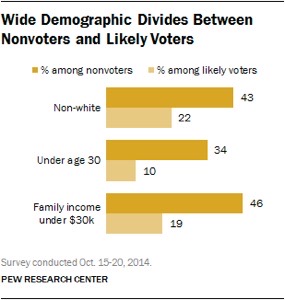
operty]. Quoting Pew again,
...
those who have lived at least five years at their current residence are significantly more likely to have their self-reported vote match the voter record than those who have a shorter residential tenure (12% vs. 26%). Renters (27%) are twice as likely as homeowners (13%) to say they voted but to not have a record of voting.
Pew explores a variety of aspects of voting habits or their lack, including
this page on non-voters, which looks at the 60% of VAP that won’t vote. See inset graphic. They’re younger, they’re racially and ethnically diverse, they’re less affluent and less educated. About half of this population does, by various measures, look to be disenfranchised, one way or another. I recommend looking at
the linked page.
This is a dire situation for the US. What it says to me is that the government (the elected political element) is NOT fully representative of its populace, but of the active half or so that voted. One could argue that it is ever thus, but I see something like a quarter of the US VEP effectively excluded. Not good.
I find this situation alarming. In Britain we are alarmed by what we call voter apathy, having a vote and failing to exercise it. In a first-past-the-post [FPTP] system I have a single mark to make to cast my vote; my vote is within walking distance of home (at worst I’ve had a 5 minute drive); the polling station is quiet, business-like and very serious. I don’t have to take a polling card because if voting at my home location I am already on the list—at least once I have carried no way to prove that I am who I say I am but was known to the officials Britain has some odd ideas about paper proof of who you are, generally distinguishing between the paper and the person [is it me you want to see, or my passport? Which is allowed across a border?]. On the downside, if I live in a constituency with a traditional and large majority, as I currently do, then my vote has virtually no effect whichever way I cast it. To be politically effective I need to go meet my MP and engage even more actively. As I have written before recently, this last election was the first time I have had a vote and not already met the incumbent. My current MP represents me whether or not I voted for her; it is up to me to engage. Or not. I do not see that I have much choice to not-vote. Indeed, I see it as all the more important to vote in council elections, European elections and referenda, where the result is far less certain and the turnout lower, so my vote is relatively more significant. Turnout in Britain generally varies between 55% and 75%.
This page from Pew Research shows the gap between registered voters and VAP across nations. Look at the space between the two blobs. Some of these countries have compulsory voting (i.e. it is some sort of offence to not-vote). Circumstances for failing to be registered for voting vary widely, but typical situations arise from moving residence or being away from one’s usual residence (and failing to have done those things that preserve one’s ability to vote). An issue with postal voting in Britain is that this can easily result in a biased vote [Imagine: family sitting round a table with voting forms and immediate ‘peer’ pressure to conform with the loudest opinion. Authority figure demands all vote his way. Me, sexist? To me, this is failure of democracy. Do your own research on this, please.]
Of course, what is at issue for me is voter participation. To my way of thinking, we should be encouraging all of every population to be active politically or to make a conscious decision to be inactive, not a move made out of apathy. I understand that for many of us we largely don’t care what our representatives think, in a leave-me-alone sort of way. That works while those who are active generally agree with your own views and while those who do the representation engage in ways that makes them appreciate what is right and wrong in their local area. View the variety of systems for registering a vote at wikipedia, please. Read there how the UK system is in need of up updating; the US has a different range of problems; compare both of these with the Australian and Canadian systems.
DJS 20160405
http://www.electproject.org/home/voter-turnout/voter-turnout-data
https://www.census.gov/content/dam/Census/library/publications/2015/demo/p20-577.pdf
http://www.pewresearch.org/fact-tank/2015/05/06/u-s-voter-turnout-trails-most-developed-countries/
http://www.naacpldf.org/case-issue/barriers-voting
http://cee.lse.ac.uk/ceedps/ceedp108.pdf connecting education and turnout
http://www.statisticbrain.com/voting-statistics/ read why people (say they) don’t vote

 |
End of an era
It looks as though my running days are over.
Would you believe I’ve been a runner for more than 50 years? I started serious regular running in my last year of primary school, 1962/3. I have run not so much regularly as persistently, since I have held many other sporting or exercise interests. Even with various injuries, time off running has been rare and I have failed to identify any period of as much as say three months of not-running. In those periods of relative inactivity it would be unusual for me to have also not had some sort of residual exercise even if what we might call therapy in struggling to return to running. What you might call training, but that, to me, means there is some identified target such as a race. For me, the running itself is the target.
Why would that be so? Well, anyone who has read other essays on running in the widest sense recognises that there is an element of drug-induced high involved. Exercise encourages the body to generate endorphins which add to one’s feeling of well-being that is felt after exercise—the so-called endorphin high. Exercise freaks? Junkies, the lot of ‘em.
So we come to this last twelvemonth. I have had something like thirty weeks off from running. Mostly this has been due to long-term injury, a sort of accumulation of damage. In particular I have had a ‘bad back’, identified eventually as contraction of the hamstring pulling on the lumbar spine, reducing me overnight from an active older person to a geriatric with a stick. For this we can blame my stretching habits; particularly their lack, and more particularly still the lack of adjustment to routines with increasing age. The back failure sends me to lie down for large chunks of time, mostly incapacitated, waiting for the pain to go away enough to go do some stretching, see a physio, in general to do something about it. However, that is a situation I can deal with once I eventually connect exercise to stretch and its lack to subsequent pain and denial of exercise. And therefore the endorphin high.
However, separately, I have a bundle of what is probably to be called scar tissue in various muscles, a build-up of what you might choose to call over-use across five decades. A particular problem in my calves was identified by one sports specialist and she seems to have cured that. Or at least she reduced it as an issue to below some threshold of being noticed. In the big muscles at the back of the thigh I have another problem I think of as very similar and I have felt this pull, shortening and slowing any pace (step and speed) for the whole of this year. Having reached a point where I have been trying to deal with this I fell into a cycle, entirely driven by a wish to compete on behalf of my new running club, of race—damage—physio—train—race. But the training element was too little every time so that each race simply restored the damage. I was doing as many races as training sessions, where I would describe the previous decades as offering a train:race ration of more like 50:1 and at the most crowded still 5:1. One to one is not only failure it is a recipe for far more failure.
One can add into this dire mix that a paucity of training makes one try all the harder in the few sessions one has; chasing the immediate target of ‘race’, not the longer-term targets of, say’ health’ , or ‘return to fitness’ or ‘return to race fitness’. This is a hopeless situation and I fell into that trap. One the way I picked up several age-category wins, one of which was awarded after I’d been saying it was my worst race for a long time. Which I deem unfair on those i beat who had a good day. My age-independent guide has been described in earlier posts and can be found on many Masters’ sites or by searching for age-grading. In China I was happy with race at 82% and once a year at 85%. Timed training would be 75-80%. On return to Britain I have managed only once to reach 80% and most races have been in the 75-78% range. This is therefore a marker of performance decay quite separate from age. Some of that is increased weight, a direct consequence of a British diet. I have returned to 73kg as for 2000-05 where Chinese weight 2008-13 was 68kg. I suspect also that the new addition is not in the same places as fifteen years ago, i.e. mostly around the middle and not spread around as muscle.
General response to this has been, in the last eighteen months (the same as time back in Blighty) to develop a daily routine of stretching the offending parts. Measurement of success is how far past my knees I can reach with straight legs (and you can laugh if I tell you I reach and have reached the floor far less than once a year). Measurement of a successful stretch (I’m experimenting a good deal of late) is the extent of any perceived stretch in the hamstring (anything from the lower back to the back of the knees). I have discovered that one of the lasting problems has been where the sciatic nerve crosses some bunched muscles in the bum (the piriformis for those in the know) and freeing up this has made a great deal of difference.
However, the test of whether I dare go running is as simple as trying to jog across a road. If i feel that bunch of blockage in the mid-thigh, then it isn’t happening. And the bad news is that I have now spent more than £1000 on Physiotherapy to discover and treat this situation. I have undoubtedly slowed progress by continuing to run (the junkie effect). In the last six months I have taken an opposite view and stayed away from running so as to give the body a chance to exert some repair. Yet I continue to fail the test. The ability to stretch is improving, but a minimum time of perseverance before any result can be detected is six weeks, so I suspect that merely sleeping in a comfortable position is the same as allowing the tendons to contract again.
My preferred physio of the moment is pushing his elbow into the thigh muscle. I know there is progress because he found a place where I was feeling only a pressure on the leg instead of distracting pain and reactions way lower down the leg (i.e. pushing on the sciatic nerve). Success here is that he pushed on a place that previously was painful.
Six month away from all running (I think I have put the kit on at most four times, and ten in the last nine months) has had several consequences.
- •I have been depressed and depressive, short-tempered and more irascible than my usual impatient frustrated self
- •I have spent a lot of money trying to find a solution
- •I have spent a lot of time on trying to accommodate this new behaviour, to the point where it feels as though everything `i do is either aimed at returning to running or alleviating the current condition
- •Discomfort is damn nearly continuous. Headaches are common. The waistline has risen from 32” to 35” and I’ve had to remove some trousers from circulation. Generally, health has decayed. Up until last month I couldn’t sit and drive for an hour before the legs complained to the point where I must stop for more stretching (and we should recognise i can practically feel the muscle contracting back as soon as a get back into the seat).
Time for major changes then.
(i) accept that perhaps there will be no more running. Cold turkey. Oh shit.
- (ii)find some less damaging exercise that restores other health and moves the leg situation to something acceptably comfortable. Current habit (excluding Dec-Mar) is a day a week in the hills (meaning 4-8 hours, 18-26 km plus usually 3-5 hours travel). To this I think I need to add regular gym time (exercise not in the house). I dream of going running but have learned that i mustn’t.
- (iii) Leave the running club, done last week. That includes a separation from the ancillary activities (committees for example). It also includes a loss of the several social aspects of being in a running club. Among the things I have learned in 30 years of teaching is that I am not a coach; I do not at all enjoy vicarious exercise. My first school had the motto exemplum docet which we read as teach by example, and in turn interpreted that as go do it too. So I ran for and with the school, I rowed only if allowed into a boat, I took soccer and hockey (almost) only if allowed to join in; I coached squash from on court (Which is to say, I didn’t coach at all). I led by example and that may well have put a few off but it kept me engaged. I have tried the other thing, standing on the sidelines; it bores me rigid. I feel much the same about making music and listening to it. If I go play in the band or orchestra or choir I’m hearing it and doing it. Yes, one doesn’t quite hear the same as the audience but I’m afraid that loss is preferable to the inactivity. Extending this, for me the inactive spectator role is extreme masochism. The adjunct activities associated with ‘helping’ an event occur are, for me, deprivation; others may view this as positive contribution but for me personally it is not enjoyable inclusion but painful exclusion.
- (iv) Possibly, accept the consequences of old age. But I’m not old!! I might well have another 30 years. Sadly, the lesson appears to be that I don’t have 30 years of running left in the legs. Specifically, in the thigh muscle. Just possibly, accept that what is required is no more—or very little—competitive running. I’m not sure I can do that
- (v) Find some other activities that provide a social element. That probably means going back to music, which means I must find a choir and a band.
What will not work for me is swimming (my bad breast stroke hurts the bad quickly and I’d expect to do 800m at least). I’m not a fan of cycling since fighting with the traffic and enjoying the fumes both detract from the ‘being outside’ part.
Ideas appreciated.
I recognise that this is a load of me-me-me. It is also the long version of why I anticipate not going running. Hence the title. This is a significant change in my life and I do NOT like having to accept that there is something I now CANNOT do. So writing this is not only catharsis, not only writing down my feelings of despair over this, it is also an apology to those who are affected by my having to make this change.
DJS 20160401
but p.m., so not the joke I wish it were.
Picture from LGBT 5km race 20/7/2015
Further, 20160404
This post collected over twenty responses on Facebook within three days, along with a wide variety of suggestion for substitute activity. Many of these were, one way or another, cycling in various guises. A few responded in the general sense, looking at the fit-for-purpose aspect of any exercise. I found these very useful.
Don’t be shy to offer your own pennyworth, please.
I have not quite given up hope of returning to running, but at the moment I’m thinking a year off for repair might be in order. Repair includes losing the unwanted extra waistline, the unnecessary last 5kg, the increase in resting heart rate and, indeed, the missing get-up-and-go. A physical depression, perhaps?
20160420 update; have attempted some running. Age-grading below 60%, which may be an all-time first, since I doubt I’ve been that low in 1960-2015. Weight up to 75kg, not the race-state 68-70kg. Hope is springing with the warmer weather. Discomfort continues in thigh, steadily more localised to small patches of muscle and several places where the sciatic nerve appears to be catching in its sheath. Physiotherapy spend heading to £1200. Diet modified to include a lot more fresh fruit and vegetables; that too is a difficult challenge.
20160427 update Yesterday at 65%. Check meaning of ‘monotonically increasing’. Hope!

Being Stupid
•behaviour that shows a lack of good sense or judgment: the quality of being stupid or unintelligent: that state that follows from having a load on information on a topic and then failing to use it.
•a lack of intelligence, understanding, reason, wit or sense. Stupidity may be innate, assumed or reactive – a defence against grief[ or trauma. (wikipedia).
Stupidity - failing to use the information you hold.
stupidity (noun)
- •behaviour that shows a lack of good sense or judgment: the quality of being stupid or unintelligent: that state that follows from having a load on information on a topic and then failing to use it.
- •a lack of intelligence, understanding, reason, wit or sense. Stupidity may be innate, assumed or reactive – a defence against grief[ or trauma. (wikipedia).
- •pejorative term equivalent to fool, idiot, dumb, moron.
- •mental slowness in speech or action (Theophrastus, via wikipedia)
- •Etymology: from the Latin stupere, to be numb or astonished.
stupid (adjective) stupider, stupidest
- •lacking intelligence or common sense: I was stupid enough to think she was perfect.
- •dazed and unable to think clearly: apprehension was numbing her brain and making her stupid.
- •informally used to express exasperation or boredom:
stupid |(noun, informal); stupidly (adverb)
- •a stupid person (often used as a term of address):
- •a person or an idea exhibiting stupidity
Examples of usage:
I can't believe my own stupidity
one of the stupidities of our age
a comedy of infantile stupidity
you're not a coward, stupid!
she told him to stop messing with his stupid painting.
I show above some definition of the words based on stupid. I have no issue with the states of stupidity caused by external factors such as grief, somewhat less tolerance for self-inflicted states such as drunkenness but none whatsoever for those caused by a failure to do thinking. I apply those opinions to myself as thoroughly as I do to others. When trying to research enough to make (more) sense and while looking for an image to use at the top, I came across a number of posters, many of which I have taken the words from and posted below. My favourite, in the context of this page. is:
The definition of stupidity: seeing the truth, knowing the truth and choosing to still believe the lies.
This is quite different from failing to disagree with the opinion of others; it is significantly an internal failure. That is similar (but different from the several sayings (quotes, homilies, whatever) referring to stupidity and love. These, to my mind, demonstrate that what looks like a sensible and current set of (life) choices will be disregarded in the face of finding what seems to be a life-partner. I have no difficulty in accepting that as a situation; an external event can cause reconsideration of all previous decisions.
No, what I have a problem with is much more the situation described in blue. Not quite the same, but closer to that than the other sayings. I suppose one could say is that what ’gets’ to me is the decision that is based on no admitted basis (and) that flies in the face of that which is admitted. All my data says I/we should do <this> but despite all of the evidence we’re going to do <that opposite thing>. That is a failure: where this is a failure to admit a value being ascribed to emotion, I decry that failure (the admission, not the emotion). Where this is obstinacy, I call this stupidity. Mostly I simply
I found, in searching for images to use, a lengthy set of cards from sources such as som(ee)cards, Rotten cards, and yourEcards with sayings3 such as:
• If you don’t stop being stupid, the “bitch slap” in my hand might activate
• I’ll start being nicer ( or sarcastic, or an asshole) when you stop being stupid
• Stop being stupid - it’s my turn
• It’s great to fall in love. You stop being stupid for no reason and start being stupid for a reason.
• Love is being stupid together (probably a popular one, best expressed, in my opinion by..)
• Follow your heart but take your brain along too because there’s a thin line between being in love and being stupid.
• Stop of being stupid (the recursive version)
• There is no reward for being stupid! So please stop competing!!
• Being stupid is easy; the hard part is to hide it.
• Somebody can become a celebrity for being stupid. That’s what it’s come down to.
• Why is it acceptable for you to be an idiot bit not for me to point it out?
• I rejoice that despite being stupid enough for ten, your vote counts only once. Therefore you cannot vote to your level of stupidity. Huzzah!
jump to the label of stupidity. Indeed, I’m afraid I rate this sort of stupidity as near-criminal, by which I mean that whatever goes wrong in co
nsequence
receives no sympathy from me. I’m famous for a lack of sympathy mostly because so many occasions fall into the category where I deem it inappropriate. A very few (designated friends) will recognise the truth of that.
I extend this concept.
What offends is failure to use available information, that is to take uninformed decisions. There are layers of stupidity here, from a mild case that you might describe as failure to do due diligence (you could have found out but didn’t) up[ to what really gets my goat1, where you had the information in your possession and failed to apply it. Shades of grey possibly earning sympathy apply if you didn’t recognise that <this> information applied to <that> case for decision.
I do not claim to be immune from stupidity. Those who worked with me in China will be well aware that I’d call myself stupid quite often. I enjoy occasions when someone attempts to change my opinion—when they do that constructively, by providing extra information. I would say that these were generally occasions when I had misread cultural symbols (applied European values to a Chinese). Forgivable to the rookie, not for my greater experience—to put that another way, I would label myself stupid for having failed to apply an earlier lesson. You could say I failed to learn from experience; once is error, twice is failure to apply the lesson learned, thrice is clearly stupidity.
This description of stupidity is not entirely but largely separated from my observation of the Far Eastern observation ‘say one thing, do a second, think a third’. This state I mostly ascribe to double-think as in 19842, holding two contradictory beliefs and ascribing to both. How else could one say one thing and believe something else entirely?. I have been exploring this extensively and one partial answer is that one tells lies internally. Answers to “how do I feel about this?” are modified so heavily by the situation (i.e. who one might be talking to besides yourself) that what is said to minimise offence or to agree as much as possible with the ‘other’ causes the internal admission to be fault-ridden. Or, in my simplistic binary thinking, to be untrue and therefore a lie. A lie because is is contrary to the true belief; far too often not just a little bit different but wholly opposite. A near-truth may be a political omission, but a counter-truth is a lie indeed and in deed. I find that far too often what purports to be an opinion or a statement of belief is far, far less, more akin to an echo response. In marital terms, as “Yes, dear” can so often mean “Whatever you say” and by implication may reflect (inflect?) such possibilities as “I don’t want to argue/ talk/ participate”, so that may reflect a refusal to engage. Fine, this is not stupidity (well, not as defined above). However, I find myself of the opinion that when one says things that one does not mean then the consequences must be borne when you are found out to have deceived. But this problem is exaggerated when the first level of deceit has been internal.
Personally I do not understand how this can occur. I understand that one can change one’s mind and, for me, that occurs when new information comes to light, when information is lit differently or when some apparently external event changes many otherwise unconnected opinions. Hence the labelled stupidities of falling in love.
I am a firm believer in the separation of church and state (“Where did that come from?” you think) in that I encourage you to hold whatever beliefs you enjoy as long as you do not inflict those upon me by trying to change my opinion. By all means explain the basis of your belief; by all means give me extra information, but let me form my own opinions and beliefs. Of course that opinion and belief is something I put out in an attempt to persuade others to agree, so I must at some level be betraying my own rule. What then do I find offensive about people proselytising? Perhaps it is the uninvited nature of the persuasion. If I welcome a conversation with someone who holds a different opinion, that, usually, is an enjoyable experience provided we can agree to disagree. It is those occasions where that, the acceptance of the existence of other opinions, is denied that we have the creation of unrest. Which one could characterise as a breach of tolerance. Most of the religious wars are formed over a lack of tolerance.4 (Historians please consider and send me the result)
The obvious current example would be the current state of opinions on in/out—Remain or Leave—of UK in Europe). The dearth of believable fact (such as any number that both sides can agree upon) has created a situation where holding to any ‘fact’ is tantamount to having decided which camp you fall in. Which in turn has come to mean that what you believe must be in some pre-emptive way be determined by the ‘facts’ or numbers you choose to trust. Which, in turn again, means that no-one will ever hear an unbiased piece of information. This is mad, maddening and a recipe for disaster: or, at least, disastrous for voting based on things that should not be the bases5 for forming opinions. All the terms one learns in Critical Thinking about false arguments apply here.
DJS 20160401
I think the top picture shows someone using a laptop. In a manner that I suspect they think of as ‘secure’. My son tells me this image is likely to be of someone doing some audio input (e.g. as part of an online course) for later upload—and far cheaper than hiring a recording studio. That makes far more sense than anything else that comes to mind, enough to explain the evident purposed knitting.
1 to “get one’s goat” from phrases.org.uk we have this not terribly helpful explanation, of which the substance is that one’s goat is also one’s temper when raised. Or roused.
The dictionary definition of goat is 'a ruminant quadruped of the genus Capra'. What's that got to do with being angry? Given the meaning of 'get your goat', we might expect to find goat as a slang term meaning anger or annoyance. That meaning is recorded in the US book Life in Sing Sing, 1904, which goat is given as a slang term for anger.
The phrase originated in the US and the first entry in print that I can find comes from a fanciful story about a burst water pipe that was printed in the US newspaper The Stevens Point Daily Journal, May 1909:
"Wouldn't that get your goat? We'd been transferring the same water all night from the tub to the bowl and back again."
The expression took a few years to cross the Atlantic. The first non-US citation isn't found until 1924 in the English author John Galsworthy's story White Monkey, and even there it is clearly seen as a recent innovation:
"That had got the chairman's goat! - Got his goat? What expressions they used nowadays!"
The following year, The Times printed a piece in memory of the then recently deceased Friedrich Baedeker. This included a side-swipe at American tourists and uses the phrase as a typical piece of Americana:
"... goggled Americans whispering aloud, 'Wa-al Sadie, these durned three star things get my goat'!"
A commonly repeated story which purports to explain the phrase's origin is that goats were placed with racehorses to keep them calm. When ne'er-do-wells who wanted the horse to race badly removed it, that is, they 'got someone's goat', the horse became unsettled and ran badly. That's just the sort of tale that gets the folk etymology juices running. Let's just say that there's no evidence to support that story.
2 1984, George Orwell. doublethink - Reality Control. The power to hold two completely contradictory beliefs in one's mind simultaneously, and accept both of them. An excellent example of doublethink in modern society is the war on drugs. Again, consider this and send result to me.
3 There are several of the discovered posts with which I disagree. I will call these offered saying posts here:
Smart listens to the head, stupid listens to the heart
This post is saying that all emotion (the label I use for what comes from the ‘heart’) is necessarily stupid. I disagree: emotion is an expression of unrecognised factors such as predicted happiness with a result, It may be spoiled by false wishes for the future. Recognising that the heart has an input can modify decisions helpfully. Post rejected. This is for me too close to accepting that people can be stupid in love but then inverting that whole by deciding that the only way one can be that sort of stupid is through emotion. Rejected.
Stupid isn’t afraid to fail
Well smart, the implied opposite of stupid, can quite easily choose to accept a failure as a learning process. Entrepreneurs will tell you that a success rate of 2% is not bad but 10% is wonderful. If we learn from our mistakes then the corollary smart is afraid to fail says to me that smart is afraid to learn. Not smart at all. Post rejected.
Smart may have the brains but stupid has the balls
Much the same as the previous post and rejected. However, if having the balls means doing something because testosterone is the driving force, in which case this is a chemically-based decision, post accepted. Stupid is as stupid does. Just possibly, ‘having the balls’ to do something is more about the subsequent bragging rights that the sense of the proposed action. In which case situation understood and, possibly very stupid.
4 One of my favourite religious stories is the description of a guided tour of heaven, usually given as part of a far longer story, in which there is a walled-off region in heaven with lots of boisterous enjoyment audible. “What’s in there?” asks the new incumbent. “Oh, that’s the Catholics—they think they’re the only ones here”.
5 the plural of basis is bases. Really. Isn’t English confusing? or is this bit Greek?

My Blog
Possible effects upon the North-east if both Newcastle and Sunderland were to go down this year.
At the moment of writing, both Newcastle and Sunderland football clubs are in the relegation zone, likely to go down from the Premiership, as we call the top soccer division1, to the Championship, division number two. I am aware of the effect upon the area when one team goes down, but it is not often that two do.
I made a spreadsheet as I was exploring and discover that the three NE teams, Newcastle, Sunderland and Middlesbrough (pronounced ‘boro) have a good history for time in the top division. Newcastle have never been in the third division, Sunderland once (1985/6) and M’boro twice, 1966/7 and 1986/7. Counting from 19002, the presence of the teams in the top division has been: (0,3), (1,29), (2,38), (3,39) Counting only since 1950, those second figures become 3,24,24,14. Those three years of absence—recognising that the misery was really the season before—were 1961/2, 83/4, 89/90. So there has been decay in the sense that the frequency of absence is occurring more often of late. Since the last war there was a good patch, in local terms, 1947-54, then 1988 (really 1987/8 when two were promoted) and then 1994-2009. Newcastle have changed leagues seven times, Sunderland eleven, Middlesbrough twenty.
That’s the soccer bit over. What happens when a club enters the top division? Well, When Swansea did there were several local studies done (university money is like that) and the upshot was a figure of £58 million attributed as direct gain to Swansea.
The total economic value to Wales of Swansea's first season in the Premier League is estimated at £58.6m
- 1£50.6m of the economic benefit was generated by Swansea City, safeguarding or creating an estimated 125 jobs
- 2The economic impact on the city of Swansea was an estimated £55.3m
- 3The non-football club activity generated around £7.9m, creating or safeguarding an estimated 295 jobs, most of them in Swansea
- 4Source: The Cardiff University study via bbc
What is this money, you wonder? Well an awful lot is from television rights. I quote from a quora answer:
... getting relegated from the Premier League will, at the very least, cost a club around £50 million. But that's a best-case scenario. It could end up costing them their very existence.
Looking for detail:
television rights. Top division income about 25 million (changing upwards next year); second division about 3 million. On going down, the millions go (25,) 19, 19, 11, 11, 3 as the League has a ‘soft-landing policy that adds in the 16,16,8,8, unless the club goes back up again. This affects the next point...
Player changes. Some players will be sold to balance the books, some because they refuse to play lower division soccer. The first point encourages them to stay for a recovery season. Since a promotion season includes a lot of winning, that is surely attractive, particularly after the previous season of defeat.
Fine differences. The difference between a division change and remaining is very small; look at Sunderland escaping relegation in 2014/5 and Middlesbrough failing to be promoted at the same time.
Changing divisions makes money Relegation’s emphasis on each match also can draw more fans to the league at the end of the season. It is true that a game has to have some importance to draw fans, but that importance need not have anything to do with winning the league title. The annual English relegation battle often generates more revenue for the teams at the bottom than the ones at the top as the season concludes.
But the following season is not so good. Regarding crowd support, I would like to give examples, Wolves' (Wolverhampton) crowds have dropped by 20 percent, Bolton's by nearly 30 percent and Blackburn's almost 40 percent in the Championship in 2012-13. That loss is offset slightly by the increased number of home games in the Championship, but relegated clubs can expect a loss of several million pounds over the course of a season out of the big time.
Sponsorship Selling sponsorships and advertising and attracting corporate interest all becomes much harder once you're no longer part of the Premier League circus. Sponsors often have "relegation" clauses in their contracts with clubs that sees them pay less in the event of the club going down. Add all that up across the commercial board, and you're looking at a loss of up to £4 million.
Yeah, but what about the local economy? I found this a hard one to answer, but offer these excerpts from an longer article in the Evening Chronicle (the ‘Chronic’) :
Recent figures showed football tourism raked in more than £22m for North East coffers.
That is because last year 26,456 overseas visitors came to the North East for a football related-trip, spending an average of £855 per person - which works out at a total of £22,619,880.
Sarah Stewart, chief executive of destination management and marketing agency NewcastleGateshead Initiative, said: “Premier League football is a popular reason why people choose to visit NewcastleGateshead and the wider North East, especially from some of our international markets, but it’s clearly not the only factor. Shopping, major events and our evening economy all play a part in making NewcastleGateshead an attractive place to visit and we know that football-specific trips actually only account for a small proportion of overall visits to the region.
“It’s also worth bearing in mind that no matter what level our teams are playing at, we still attract visiting fans and supporters. In fact, the last time Newcastle United was relegated weekend hotel occupancy levels across the destination remained consistently strong.”
The economic hit of relegation would most likely be felt most by the club itself, who would miss out on at least £100m in TV revenue when next season’s Premier League TV deal kicks in.
So perhaps the ancillary effects on food and drink, the hotel industry and transport are small in comparison to the wider economy. What then about local spirit? In an environment where local unemployment has a history of being chronic (16% all through my formative years), enthusiasm to go to work is a significant factor, we are told. I went looking for supporting evidence and found this from SIRC
The results reveal that sport - and conversations between staff and customers, managers and staff, men and women - can have a positive impact on boosting morale and improving mood, motivation and productivity in the working environment.
63% of men and 52% of women said that sporting success (i.e. their team winning) has an impact on their approach to work.
47% women and 40% of men said that sporting success lifts their mood and makes them more productive in their jobs.
A fifth of men said sport increases their motivation at work compared to 12% of women.
Only 3% said that sporting success is distracting and makes them less productive.
Oh. good. So when both Newcastle and Sunderland go down, and Middlesbrough doesn’t quite make it through the play-offs to go up, the whole of the North-East will be depressed, crying in its beer. That’ll last as far as the next season when at least one will go up, of course. Recognising which will be a battle, but the other teams in the Championship won’t enjoy going to Tyneside.
And, I suspect the government will find its Northern powerhouse somewhat weakened. This far from London (much the same as Cornwall) we don’t tend to trust political words much, but I fear that we’ll be letting down our end because of the football, odd though that may seem.
For those who don’t live in the North-East, football is an equivalent to church. I kid you not: there is far more emotion, more passion, more testing of belief in (following) the football here than any amount of churching, and the numbers following the local team(s) is far higher across all religions (the non-soccer ones). I don’t need to test that statement, it is self-evident.
DJS 20160330
Mother’s birthday, if she were still with us.
as yet this is the second draft, since the first lost itself as I switched machines. Damn, but probably my fault, not Apple’s.
20160419 I noticed I’d missed a trick: Newcastle Falcons, our local rugby Union team, looks likely to be relegated too. the Falcons are (wiki entry) currently the only professional rugby club in north east England, having been out of the Premiership just once, the 2011-12 season.
A frequent question to me in China would ask which (soccer implied) team I support. I have never been to watch a match in Britain. I followed BenFica when living in Portugal, going to many matches; but then I’d met many of the team at my first such match (going bacl to Lisbon on their team bus, would you believe). Living here, I am sensitive to the effects of the result on the streets of the city (any of the three, in my case mostly Newcastle). The people I ran with 2014/5 would often discuss the team situation, with numbers supporting all three (each of the three is perhaps more helpful) being quite well spread.
Site List
http://www.sirc.org/publik/sport_and_the_workplace.pdf
http://www.chroniclelive.co.uk/news/north-east-news/newcastle-united-relegation-would-huge-10997555
http://www.bbc.co.uk/news/uk-wales-south-west-wales-20895147
http://www.kcbusiness.co.uk/content/newsletter-articles/view/premier-league-football
1 Since 1992, Premier League (“the Premiership”), Championship, League 1, League 2, National, then regional leagues. See here. and here.
2 Soccer not played 1915-18 and 1940-45

Free Speech isn’t
We claim, in both the US and the UK that free speech is an essential, even defining, attribute of our society. Yet I don’t think we have it and I’m not at all sure we really want it.
Free speech is the right to express opinion without restraint. As such it is likely to cause offence; that offence is the subsequent controller of the freedom to speak your mind. Freedom of expression (wkipedia tells me) is the related issue of expressing ideas in other media than speech, which itself apparently includes other direct forms of communication such as writing.
Free speech was established in the UK following the Magna Carta, though the document is quite silent upon the topic. Magna Carta as a brand of sorts (see) is a different story1. The post-war Declaration of Human Rights [1948] gives us a more clear statement, followed by the [1953] European equivalent2. Article 10 of the (UK) Human Rights Act 1998 explains the term freedom of expression:
1 Everyone has the right to freedom of expression. This right shall include freedom to hold opinions and to receive and impart information and ideas without interference by public authority and regardless of frontiers. This Article shall not prevent States from requiring the licensing of broadcasting, television or cinema enterprises.
2 The exercise of these freedoms, since it carries with it duties and responsibilities, may be subject to such formalities, conditions, restrictions or penalties as are prescribed by law and are necessary in a democratic society, in the interests of national security, territorial integrity or public safety, for the prevention of disorder or crime, for the protection of health or morals, for the protection of the reputation or rights of others, for preventing the disclosure of information received in confidence, or for maintaining the authority and impartiality of the judiciary.
Notice that the second clause allows for limited to be imposed, so freedom of expression (speech included there) was always curbed. We wouldn’t, I think, want to support slander or libel and in Britain we have a long history of law that defines what those are (or have become).
Americans have a simpler situation, stemming from the 1st Amendment [1791] to the constitution [1787]:
Congress shall make no law respecting an establishment of religion, or prohibiting the free exercise thereof; or abridging the freedom of speech, or of the press; or the right of the people peaceably to assemble, and to petition the Government for a redress of grievances.
There are several (many) acts clarifying this, but wikipedia helpfully includes this, from Thurgood Marshall in 1972:
Above all else, the First Amendment means that government has no power to restrict expression because of its message, its ideas, its subject matter, or its content. To permit the continued building of our politics and culture, and to assure self-fulfilment for each individual, our people are guaranteed the right to express any thought, free from government censorship. The essence of this forbidden censorship is content control. Any restriction on expressive activity because of its content would completely undercut the 'profound national commitment to the principle that debate on public issues should be uninhibited, robust, and wide-open.'
That article goes on to list types of speech [core political, commercial, expressive conduct] and types of speech restriction [on content; on time, place & manner; incidental burdens; prior restraint] and specific exclusions [quite a list3].
We have a long list of curbs upon free speech in the UK and a similar list curbing behaviour. Can you still lose your job for being gay? for wearing a jihab? any ‘wrong’ clothing? Can you garner public censure for being any sort of ‘extremist’? for causing some other body to express distaste / unease / resentment / dislike at your remarks? is the Press the guardian of free speech or is it a self-proclaimed judge of what we are allowed to say?
Wikipedia has a page covering just this topic, listing restrictions by country. Looking specifically at Britain, so often celebrated as a source of free speech, we can see how very untrue such a belief is. At heart in Britain there is an assumption freedom of expression not enshrined or limited by laws—there is no Bill of Rights; this is now ruled by European law, but it remains true that British law takes precedence (except when it doesn’t, apparently) and domestic law is presumed to supply effective remedy [Three Pillars of Liberty, Klug, Starmer & Weir, 1996]. Indeed,
the rights of ordinary people in the UK are for the most part ‘negative’—that is, rights to be protected from interference by others rather than positive rights, say, to publish a controversial article or to join a protest march.
This idea of negative rights is quite a valuable one, for it means that the list of what is restricted should be relatively easy to discover. Moreover, establishing some principles for what it is that one could expect to be restricted should be fairly straightforward.
Speaking for myself I understand the social convention to be that we don’t usually discuss religion or politics in public; that we strive not to give offence, but at the same time make clear that some things are expressed and personal opinions (and opinions are, of course, open to being changed); we have a convention of striving to agree (to be agreeable) and confrontation is very un-British, which is why confrontational behaviour is so shocking in Britain; rudeness itself is frowned upon—and the cost of that is, usually, honesty.
I have copied the entire wiki entry Freedom_of_speech_by_country#United_Kingdom below4 and used that for this patch in blue;
United Kingdom citizens have a negative right to freedom of expression under common law. In 1998, the United Kingdom incorporated the European Convention into its domestic law under the Human Rights Act. However, there is a broad sweep of exceptions including
- • threatening, abusive or insulting words or behaviour intending or likely to cause harassment, alarm or distress or cause a breach of the peace (which has been used to prohibit racist speech targeted at individuals),
- •sending any article which is indecent or grossly offensive with an intent to cause distress or anxiety (which has been used to prohibit speech of a racist or anti-religious nature),
- • incitement, incitement to racial hatred, incitement to religious hatred, incitement to • terrorism including encouragement of terrorism and dissemination of terrorist publications, glorifying terrorism, collection or possession of a document or record containing information likely to be of use to a terrorist,
- • treason including advocating for the abolition of the monarchy (which cannot be successfully prosecuted) or compassing or imagining the death of the monarch,
- •obscenity, indecency including corruption of public morals and outraging public decency,
- • defamation, prior restraint, restrictions on court reporting including names of victims and evidence and prejudicing or interfering with court proceedings, prohibition of post-trial interviews with jurors, scandalising the court by criticising or murmuring judges, time, manner, and place restrictions, harassment, privileged communications, trade secrets, classified material, copyright, patents, military conduct, and limitations on commercial speech such as advertising. [much as the equivalent US list].
UK laws on defamation are among the strictest in the western world, imposing a high burden of proof on the defendant. However, the Education Act (1986) guarantees freedom of speech (within tertiary schools) as long as it is within the law. UK defamation law may have recently experienced a considerable liberalising effect as a result of a ruling in 2006. This revived the so-called Reynolds Defence, in which journalism undertaken in the public interest shall enjoy a complete defence against a libel suit. Conditions for the defence include the right of reply for potential claimants, and that the balance of the piece was fair in view of what the writer knew at the time.
So do we have free speech? The principle to apply in Britain is that you strive not to offend the people with whom you are talking. On the face of things that is to avoid disagreement, argument and an unseemly display of emotion. There are acceptable social situations where opinion is allowed and even encouraged, such as public debate, where one might take a stance irrespective of belief so as to make the strongest possible argument. Much of what we call comedy in Britain takes a situation and exaggerates it to point out sillinesses’ indeed, comedy is a great way to affect public opinion, to point out ways in which our behaviour, while acceptable, is based on flawed thinking and so it is an effective vehicle for change, perhaps even more so than politics. [Why? Because politics is ‘serious’, threatening and so obviously biased by the standpoint of the speaker: comedy is played for laughs and political comedy is ‘against’ everyone, indiscriminately. We tend to disbelieve a politician but the space in which a comedian works is entirely based upon assumption that the bulk of the subject is common knowledge.] We have different social rules when in private, which is why so much damage is done with hidden recordings (a sort of theft, I think) that are then subject to public scrutiny when never meant as such. I feel eavesdroppers usually get what they deserve and thus I detest it when such people quote and publish. These are not leaks, these are breaches of privacy. My opinion, which of course you are welcome to try to change.
if you want to test whether you have free speech, try gently pushing the boundaries by talking about it. I suggest that testing it by saying radical things will cause you to find out by losing friends; talking about what sort of phrase might offend, this providing a context in which the boundaries are being tested co-operatively, seems to me slightly safer, unless overheard.
DJS 20160101
I’m trying to use black for general content, brown for quotes, blue for modified quotes and red for opinion. Which causes me to wonder what opinion is and what it is that turns black into red. Is the red is the bit that might cause offence?
Sites visited (I really mean recorded, don’t I?):
http://www.thetimes.co.uk/tto/opinion/columnists/article4649909.ece Matthew Parris on form. He knows about this topic, having worked for various bodies that worry about the freedom of speech.
http://findlaw.co.uk/law/government/constitutional_law/fundamental_rights/500150.html
https://en.wikipedia.org/wiki/Freedom_of_speech
http://www.bl.uk/magna-carta/articles/magna-carta-in-the-modern-age
http://www.economist.com/blogs/erasmus/2015/10/faith-and-free-speech-britain
https://books.google.co.uk/books?id=8LqIAgAAQBAJ&pg=PA37&source=gbs_toc_r&cad=2#v=onepage&q&f=false
1 I was aware that King John signed the Magna Carta under duress; all film I’ve seen suggests that he was not a nice guy and that the barons were right. I read here that the Pope annulled the document (Apparently he could do that). Yet Britain, famously with no codified constitution, uses ‘Magna Carta’, the label, as if it signifies the creation of freedom of speech. Edward 1 confirmed the 1225 version of the charter in about 1297, though virtually none of that remains as law.
2 the long title is European Convention for the Protection of Human Rights and Fundamental Freedoms See more at: http://www.bl.uk/magna-carta/articles/magna-carta-in-the-modern-age#sthash.3gY8UAWj.dpuf
3 Here is that list, shortened to little more than titles
Inciting imminent lawless action Such speech was originally banned under the weaker clear and present danger test but this test has since been replaced by the imminent lawless action test The canonical example is falsely yelling "Fire!" in a crowded theatre. This is an example of immediate harm.
Fighting words; True threats; Child pornography;
Obscenity is speech to which all the following apply: appeals to the prurient interest, depicts or describes sexual conduct in a patently offensive way, and lacks serious literary, artistic, political, or scientific value.
Torts [Defamation, Invasion of privacy, Intentional infliction of emotional distress]
Commercial speech If this test is satisfied, the law will be upheld:
The speech regulated is fraudulent, misleading, or proposes an illegal transaction; or
All of the following elements are present:
The government's interest in regulating the speech is substantial;
The restriction directly advances the government interest; and
The restriction is no more extensive than necessary to advance the government interest.
This is why the government can ban advertisements for cigarettes and false information on corporate prospectuses (which try to sell stock in a company).
Political spending; Government speech; Public employee speech; Student speech;
National security; Military secrets Inventions ; Nuclear information; Weapons
...and to this we can add (I say) a growing list of curbs across the internet, where people have apparently assumed that no restrictions apply. Obviously there is a conflict between the forces arguing for restriction more than that above, which is mostly those recognising that the young have largely open access (and failing in parenting to curb that) and those who continue to feel that here is a space where the lowest international standard must be applied, hopefully none whatsoever. That would recognise the huge market on the ‘net for porn in its many forms and in turn decrees there is no limit upon that. Except as imposed by market forces, perhaps.
4 This is the wikipedia entry: shorn of links and citations: if you want them, go read it through the link given:
United Kingdom citizens have a negative right to freedom of expression under common law.In 1998, the United Kingdom incorporated the European Convention, and the guarantee of freedom of expression it contains in Article 10, into its domestic law under the Human Rights Act. However, there is a broad sweep of exceptions including threatening, abusive or insulting words or behaviour intending or likely to cause harassment, alarm or distress or cause a breach of the peace (which has been used to prohibit racist speech targeted at individuals), sending any article which is indecent or grossly offensive with an intent to cause distress or anxiety (which has been used to prohibit speech of a racist or anti-religious nature),incitement, incitement to racial hatred, incitement to religious hatred, incitement to terrorism including encouragement of terrorism and dissemination of terrorist publications, glorifying terrorism, collection or possession of a document or record containing information likely to be of use to a terrorist, treason including advocating for the abolition of the monarchy (which cannot be successfully prosecuted) or compassing or imagining the death of the monarch, sedition (no longer illegal, sedition and seditious libel (as common law offences) were abolished by section 73 of the Coroners and Justice Act 2009 (with effect on 12 January 2010)), obscenity, indecency including corruption of public morals and outraging public decency, defamation, prior restraint, restrictions on court reporting including names of victims and evidence and prejudicing or interfering with court proceedings, prohibition of post-trial interviews with jurors, scandalising the court by criticising or murmuring judges, time, manner, and place restrictions, harassment, privileged communications, trade secrets, classified material, copyright, patents, military conduct, and limitations on commercial speech such as advertising.
UK laws on defamation are among the strictest in the western world, imposing a high burden of proof on the defendant. However, the Education (No. 2) Act 1986 guarantees freedom of speech (within institutions of further education and institutions of higher education) as long as it is within the law (see section 43 of the Education (No. 2) Act 1986). UK defamation law may have recently experienced a considerable liberalising effect as a result of the ruling in Jameel v Wall Street Journal in October 2006. A ruling of the House of Lords—the then highest court of appeal—revived the so-called Reynolds Defence, in which journalism undertaken in the public interest shall enjoy a complete defence against a libel suit. Conditions for the defence include the right of reply for potential claimants, and that the balance of the piece was fair in view of what the writer knew at the time. The ruling removed the awkward—and hitherto binding—conditions of being able to describe the publisher as being under a duty to publish the material and the public as having a definite interest in receiving it. The original House of Lords judgment in Reynolds was unclear and held 3–2; whereas Jameel was unanimous and resounding. Lord Hoffman's words, in particular, for how the judge at first instance had applied Reynolds so narrowly, were very harsh. Hoffman LJ made seven references to Eady J, none of them favourable. He twice described his thinking as unrealistic and compared his language to "the jargon of the old Soviet Union."
The Video Recordings Act 2010 requires most video recordings and some video games offered for sale in the United Kingdom to display a classification supplied by the BBFC. There are no set regulations as to what cannot be depicted in order to gain a classification as each scene is considered in the context of the wider intentions of the work; however images that could aid, encourage, or are a result of the committing of a crime, along with sustained and graphic images of torture or sexual abuse are the most likely to be refused. The objectionable material may be cut by the distributor in order to receive a classification, but with some works it may be deemed that no amount of cuts would be able to make the work suitable for classification, effectively banning that title from sale in the country. Cinemas by convention use BBFC classifications, but recordings refused a classification by the BBFC may still be shown in cinemas providing the local authority, from which a cinema must have a licence to operate, will permit them.

Drown-proofing
I have been aware of flooding of houses as a problem for a long time, perhaps from the time in teh 60s when our own street flooded. When buying a house in the Fens an early essential question was how high we were above the river level. The answer was not much, perhaps 6 m above sea level and three above the usual river level, but more importantly we were at the high point in the village and above most of Cambridge, so while the village might be cut off by flooding, our house would stay dry until a very large amount of the county was under water. In that house, despite being 60 miles from the sea we were conscious of the tide, because the river could not flow out if the sea was high, so the fresh water would back up. The Fens have carefully controlled water levels at the best of times and the management of water is a fine art, there. Thereafter we sought places on hills.
When in China such issues were largely avoided by living in high-riser apartments, but that doesn’t prevent flooding being an issue. In Nanjing on wet days the water would flood downhill through the shops and the mopping up was a frequent sight.
When we lived in Cornwall, a band colleague and friend lived in a valley bottom—the village stream ran through his garden— and, after his second flooding, he redecorated downstairs by extending the slate floor up the walls of the ground floor to a point he felt would be above likely flood levels. Thus on the next flood he moved furniture smartly, the bottom level of house flooded and on the third day after the flood subsided, all was restored to its previous condition, with no new damage.
All of which tells us that flooding is a problem we can cope with.
We do not need to build on floodplains and I have been reading about the error in so doing for a long long time. Parts of York are 5 metres below the ambient river level and building so far below such a datum seems to me to be a recipe for disaster. Indeed, I feel this so strongly that I do not see why the state should provide significant reparation for such silly mistakes; from where I have been viewing this situation, the state is effectively encouraging people to make avoidable mistakes. As our weather becomes more violent, we will presumably have similar issues with wind-proofing and people like myself who try to live on hilltops will be at risk of a different sort of storm damage. I look at the damage in the US this week following 200mph winds and wonder (yet again) why we don’t build into the earth. Looking at 70mph winds in Scotland several times in December 2015, I have been thinking the same, as I don’t think my house will survive 70mph winds unscathed. To put such winds in perspective1, I think many of us are blown away (lifted off our feet) in a 70mph and we have difficulty walking in winds over 40mph. The construction issue with wind is that we build with an assumption that gravity will hold everything in place. As regards flooding, we build with an assumption that water will not get into the house.
When flooding occurs, water comes into the house in three ways; from above, from below and through the openings. From above will not occur before you have lost cover; from below occurs when the floors are porous (coming through a suspended floor) and through the openings (doors, airbricks, windows, around pipe openings implies a different set of issues and explains the liberal use of sandbags2. Some of these can be avoided by intelligent attention to building detail (airbricks, pipe openings), some (doors and windows) represent a different class of problem. I suggest that once water has passed cill height the house will flood soon whatever is done.
So if you are going to live in an area liable to flooding and you are determined to make the best of that, what can you do?
In terms of portable solutions, you can store some sandbags and their equivalents. You can look hard for problem areas such as pipe openings and airbricks and deal with them on a case by case basis. At such times you have a target protection level in mind, let us say window cill height.
In terms of construction solutions, you want slab flooring (probably concrete and screed), you probably want water-tolerant surfaces such as stone (slate, hard tile) and you want to extend this up the walls to your target height. There’s a challenge to do that in an attractive way, but we’re good at invention (although bad, usually, at spending). You do not really want to aim to keep the water out—the pressure is so great that it is likely to do far greater damage than you expect. Materials than respond badly to water damage include timber, plasterboard, insulation of rockwool and similar, handmade bricks, all mdf and other manufactured wood. If you were thinking to use plasterboard, then lay it landscape so it can be replaced easily.
I’d expect the dado rail to reappear in such housing, above the target height so as to define the change in materials, to accommodate the wiring and other services you’d like to keep dry. I’d expect that all sewerage in such housing areas to have non-return valves and I’d expect all electrical substations to be built on elevated platforms. I’d also expect that developments in flood plains would use designs that make the living spaces higher. Housing in my own immediate area is tall and narrow with the ground floor given over to utility and garage spaces; all of this would be easily built to be flood-survivable up to first floor level. I’d expect the ground floor to be built in engineering brick (we usually use this up to damp-proof course for expense reasons). I’d expect some change in foundation design. I’d expect change to supply and connections to electrical services.
With these changes, we might then accept that flooding occurs and that living in such a zone is not a life-changing experience. In a sense, accepting that the desperation to live in a particular area (location is all, we are told) is balanced by some inconvenience, but that the level of such inconvenience can be reduced to just that.
I am reminded of the three little piggies. When we make mistakes with our eyes open these are avoidable errors. There are elements in such decision that I might call due diligence and we have advisors who are supposed to help us make such decisions in an informed way. Sellers are supposed to supply honest information3 but (bad) human behaviour pushes that honesty into a corner. I am ever hopeful that the pendulum will swing towards individual (and collective) responsibility for decisions, not the current reliance upon the nanny state to come rescue us. What we have is an extension of the free speech issue; not only do we claim to be able to say anything with no consequences4, we apparently wish to be able to do any number of stupid things and have everyone else (the state in some form) come make it right. Neither position is actually acceptable.
DJS 20160101
Sites visited (I really mean recorded, don’t I?):
http://www.nationalfloodforum.org.uk/bluepages/
http://www.homebuilding.co.uk/2014/01/03/building-in-a-flood-zone/
1 Researching this, having had trouble in the hills with small people in 40mph winds, I found this answer: Let's do {some] math[s] before we look for information. First, what is the force that keeps you anchored to the ground? This is the force of static friction, which is Fs=μmg. What is this force opposing? The force of drag from the wind pushing on you. For the velocities involved (a high Reynolds number regime), the drag is quadratic in velocity, Fd=½ρv2CdA, where ρ is the density of atmosphere, v is the velocity, Cd is a dimensionless drag coefficient, and A is your body's cross-sectional area. So let's set the forces equal and solve for the velocity: v2 = 2μmg / (ρCdA)
We'll be very ballpark about this. The density of air is ρ≈1.2 kg/m3 . I'll say your mass is 50 kg . Per this paper, we'll say CdA≈0.84 m2 . Per this thread, we'll say μ=0.4 . Putting all these numbers in gives us v≈20 m/s , or about 45 mph. But, this is just enough to make your body move (compared to standing still on the ground). It would take at least a 70 mph wind to overcome the force of gravity, and even then, that's assuming the wind keeps pushing on you with your body turned to face it (or away from it), not sideways. Hard thing to guarantee given how the body is likely to tumble or spin.
2 Are sandbags a good solution to flooding? The sacks are easy to store, sand or a substitute should be easily found (e.g garden soil). The requirement is something heavy enough not to drift away, flexible enough to stay in place and fill gaps. Sacks can be used for other things; Many of the alternatives broadcast that flooding is a problem (and that brings an element of shame?)
Alternatives here: sandbag alternatives {Absorbeez, Floodsax, Aquasac, etc}, airbrick solutions such as snorkel vents, door barriers {Floodgate, DoorDam}, clever seals that expand in flooding and so on.
3 In an environment of ambulance chasers and the current blame culture, the safest reply to requests for information for which you will not be thanked but only pursued is “I don’t know”. This is not a good position to be in. It is in everyone’s interests that information be available BUT if the response to all supply is simply more questioning and demand for ever greater detail then the natural response is to shut down this interaction early. Caveat emptor (buyer beware) is a good guide, but when the buyer persists in making the seller’s life uncomfortable, this pushes us to a position where the seller refuses to complete the sale. Indeed, it begs the question of when ion such a process the seller can still pull out and similarly when the point is at which the buyer no longer has a claim upon the seller’s repsonse. Observed habit in Britain is that once a sale has completed (the money moved, the title transferred) the vendor tries very hard to have nothing further to do with the vendee (buyer). That applies to cars as much as houses, which is why one may prefer to buy cars from a business—they can’t easily hide.
4 There is very little free speech left in both the US and the UK, places that proclaim such an ideal. See a decent example explanation Times article by Matthew Parris. Indeed, have a good wide read about this before I write about it too.
